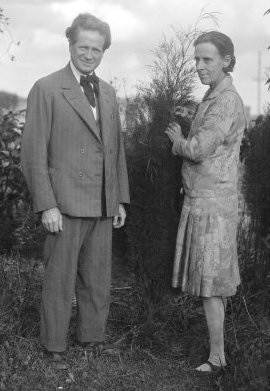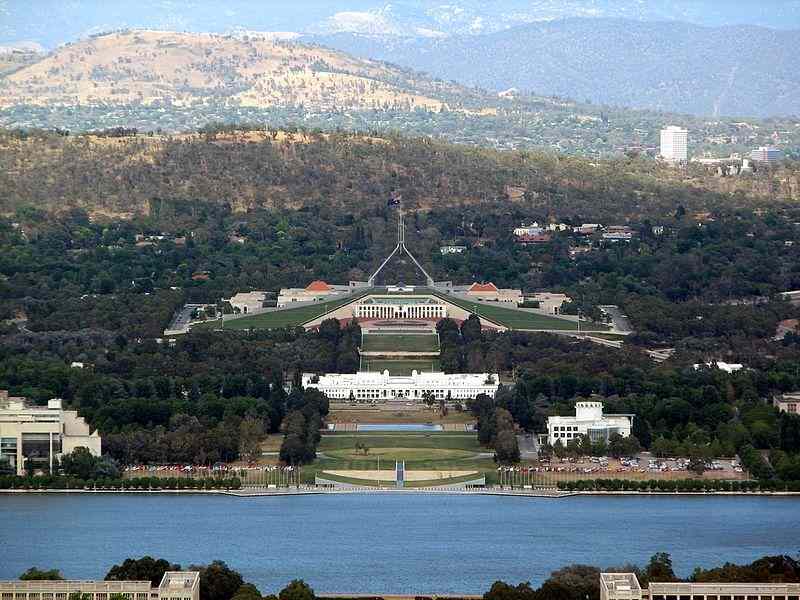 |
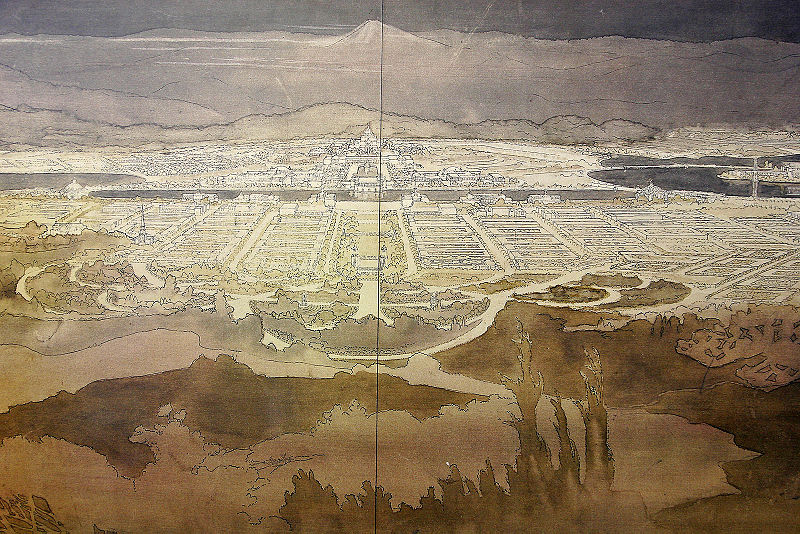 |
History |
Australian Botanic Gardens |
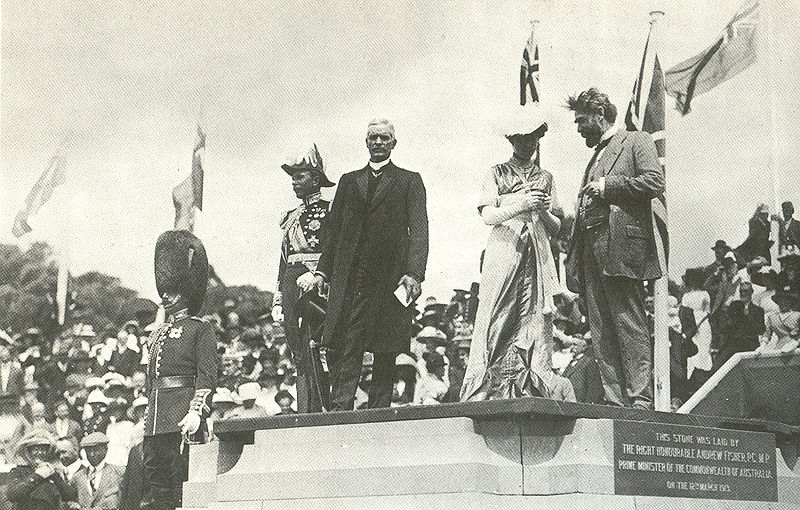 |
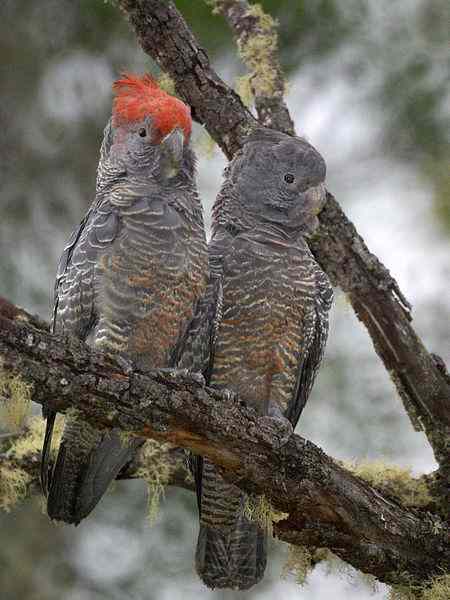 |
Parliamentary Triangle |
Anzac Parade |
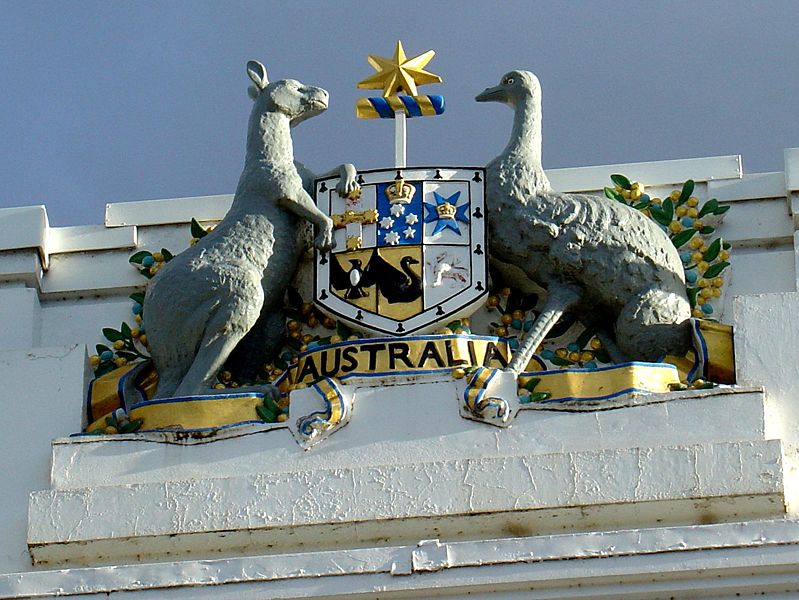 |
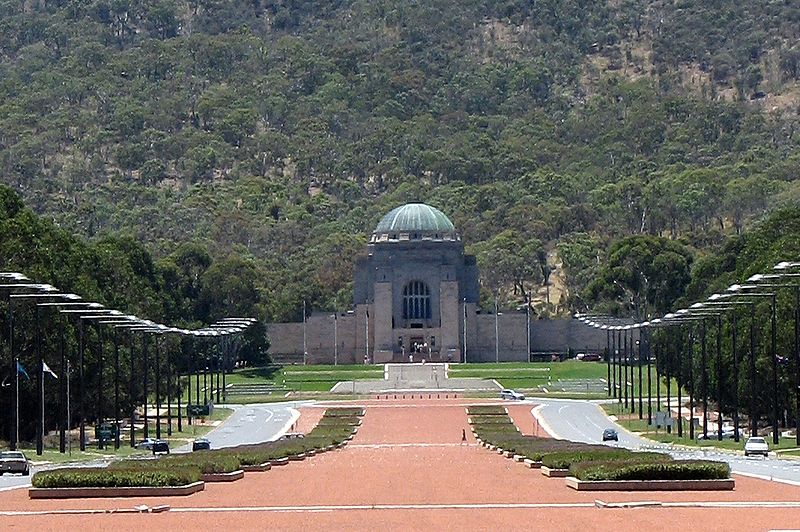 |
Namadgi National Park and Tidbinbilla Nature Reserve |
|
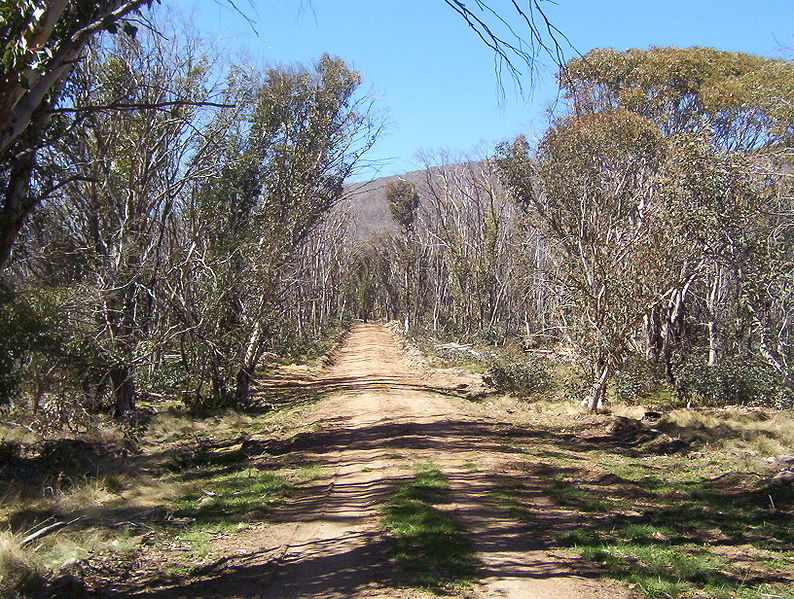 |
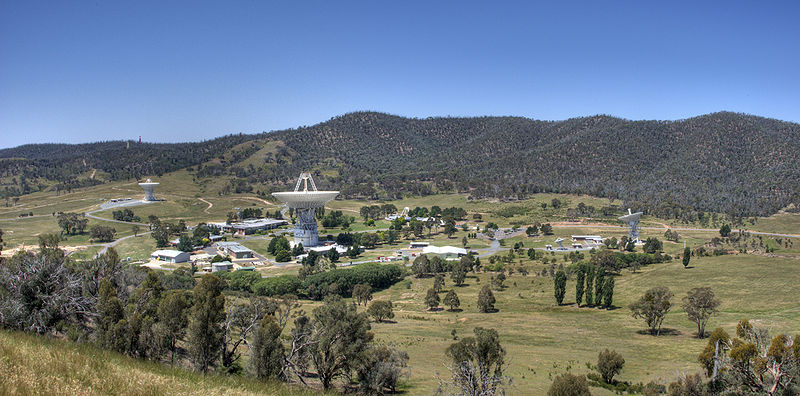 |
View Larger Map |
The Australian Capital Territory,
always referred to as 'the ACT', sits in a mountainous
area immediately south of the Goulburn Plains, a small
portion of hilly country of what would otherwise be New
South Wales. Canberra proper and some pastoral holdings
are in the northern portion of the ACT. Namadgi National
Park is the alpine remainder. Its mountains include the
Tidbinbilla Range, the eastern edge of the Brindabella
Range and the Billy and Booth Ranges directly south. (A
range of mountains in Australia can refer to quite small
sections of mountainous areas.) Canberra's nearly alpine setting can produce cool weather all year round. The region's arid summer makes for pleasant nights even during the warmest weather; temperatures can be fierce in January and February. Morning frosts and fogs occur from late April through October. Fogs occasionally interfere with air travel: the pre-dawn flight out nearly always leaves, but subsequent departures are sometimes delayed until mid-morning. Except in the mountains south of town, snow rarely falls. Rainy periods seem slightly more frequent in winter. Geologically part of the lower Palaeozoic Tasman Geosyncline, the surface soils are hard setting and of limited fertility. Eucalypt forests thrive here, numerous acacia species occur as well. The former give lush, gentle green hues to the hills, especially in the low angles of evening or morning light. The native species contrast with the stark green of the hillside pine plantations immediately outside Canberra. Acacia trees blossom in late winter until nearly mid-summer. Delicate pea species and orchids are common in the forests. |
Canberra's nearly alpine setting can produce cool weather all year round. The region's arid summer makes for pleasant nights even during the warmest weather; temperatures can be fierce in January and February. Morning frosts and fogs occur from late April through October. Fogs occasionally interfere with air travel: the pre-dawn flight out nearly always leaves, but subsequent departures are sometimes delayed until mid-morning. Except in the mountains south of town, snow rarely falls. Rainy periods seem slightly more frequent in winter.
Geologically part of the lower Palaeozoic Tasman Geosyncline, the surface soils are hard setting and of limited fertility. Eucalypt forests thrive here, numerous acacia species occur as well. The former give lush, gentle green hues to the hills, especially in the low angles of evening or morning light. The native species contrast with the stark green of the hillside pine plantations immediately outside Canberra. Acacia trees blossom in late winter until nearly mid-summer. Delicate pea species and orchids are common in the forests.
The Murrumbidgee River flows across the territory from southeast to northwest immediately south of Canberra. The Molonglo River flows through Canberra and into the Murrumbidgee west of town. Lake Burley Griffith is the result of some sensible engineering along the Molonglo and was finally filled in 1964. The Gudgenby and Cotter Rivers empty into the Murrumbidgee as it flows along the face of the Tidbinbilla Range.
The Territory encompasses an area of 2368 sq km surrounded by New South Wales and includes vast expanses of national park and bush, as well as its federal port at Jervis Bay on the southern coast. For all practical purposes, the ACT is identified with the city of Canberra, and Canberra is unfortunately equated with the federal government in the minds of most Australians, although only about 50 per cent of the working population of the city are employed directly by the public service.
The Ngunnawal and Ngarigo people occupied the Canberra and Monaro region for some 20,000 years; evidence of their early presence exists in several rock sites throughout the territory, and in charcoal deposits uncovered at nearby Lake George. Present-day Canberra was the site of annual summer gatherings of Aboriginal groups, who came to capture and eat the migrating bogong moths, which still arrive in their millions from Queensland on their way to the cool rocks of the Snowy Mountains. The Ngunnawal people today are establishing an Aboriginal 'keeping place' in the capital, and are actively involved in plans for the new Canberra Cultural Centre.
The area was first explored by white men in the 1820s, when Charles Throsby, James Vaughan and Joseph Wild came looking for the Murrumbidgee River, which they failed to find. A later expedition in 1823 with botanist Allan Cunningham found the river near Lanyon, and settlement began on what was called the Limestone Plains. Joshua John Moore took up the first land grant in 1824 on what is today the Acton Peninsula. He named the property 'Canberry', after hearing local Aborigines refer to the spot as 'Kamberra', thought to mean 'meeting place', or, alternatively, 'women's breasts'. In 1825, successful businessman Robert 'Merchant' Campbell was granted 4000 acres here in compensation for a wrecked ship; he established the estate of Duntroon as a near fiefdom of graziers and farmers, and donated money for a church and school. By the time Duntroon was purchased by the government for the establishment of the Royal Military College in 1911, the original land grant had grown to 30,451 acres (12,323 ha).
By the 1830s, several other homesteads were established throughout the region: George Palmer's 'Palmerville' at Ginninderra Creek, which later became the location for Gungahlin Homestead; Terence Murray's 'Yarralumla'; Tuggeranong Homestead in the valley now filled with suburbia; squatter James Wright's Lanyon, now preserved as an historic site; and further out on the edges of present-day Namadgi National Park, William Farrer and George de Salis' Lambrigg and Cuppacumbalong, now a venue for hire. Miles Franklin, author of My Brilliant Career (1901), grew up on a homestead in the Brindabella Mountains, a time she fondly recalls in her Childhood at Brindabella (published 1963). The region remained prosperously rural until its selection to become the national capital in the early 1900s.
Canberra
As a completely planned federal capital, the city of Canberra has very few structures pre-dating 1910; it is a city of many important public monuments, as well as a sprawling conglomeration of many suburbs. Currently, with a population of 300,000, Canberra has far more to offer than its (many) critics would espouse. The natural setting is glorious, and cultural events abound.Canberra comes honestly by its claims to being 'the Bush Capital'. The surrounding countryside is magnificent, with superb national parks within 30 minutes of Civic Centre, and it is one of the only cities in Australia where one can easily experience native species in the wild-kangaroos do appear in residents' back yards.
Birds to watch for include
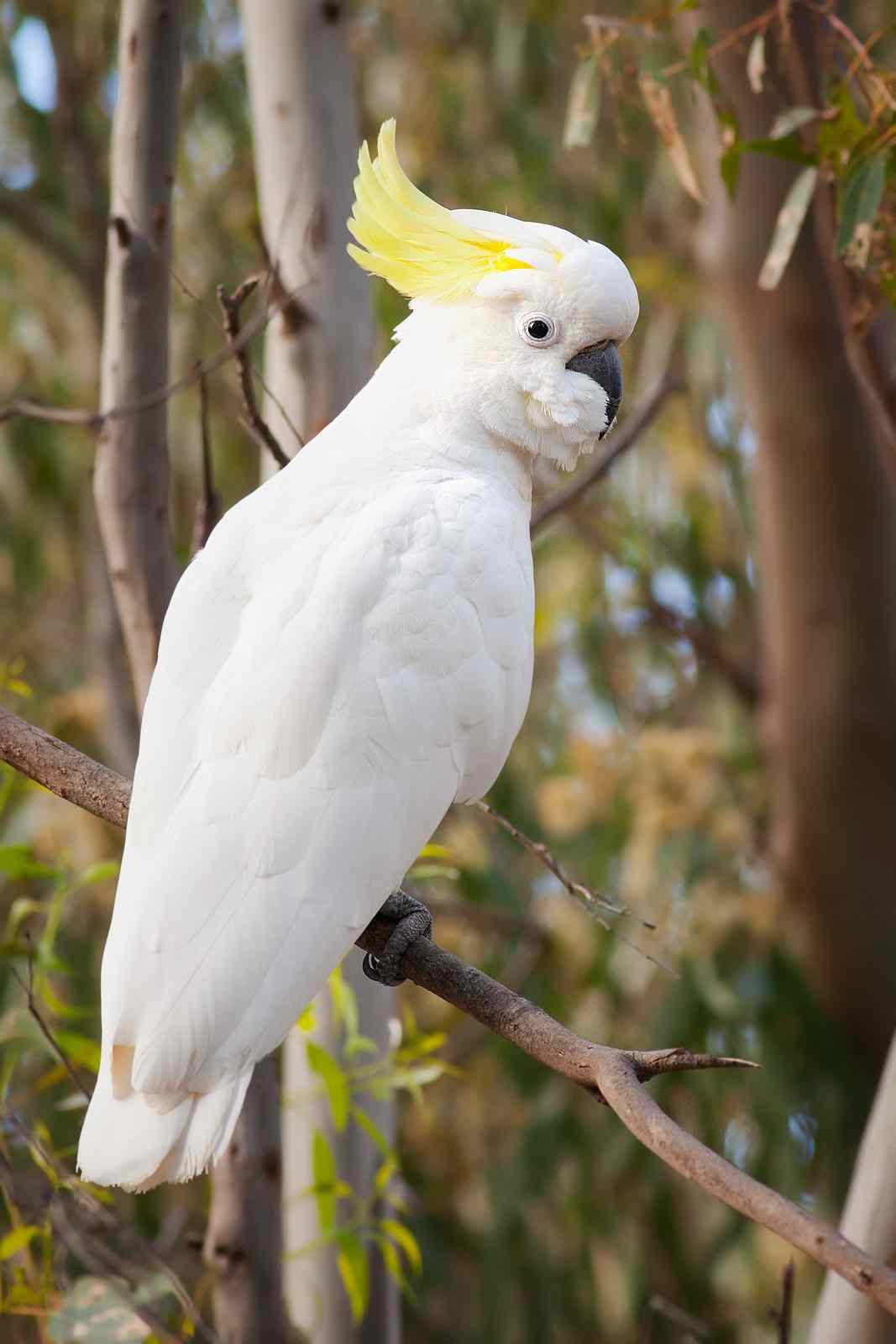 the sulphur-crested cockatoo, a large, white, social bird with a raucous call |
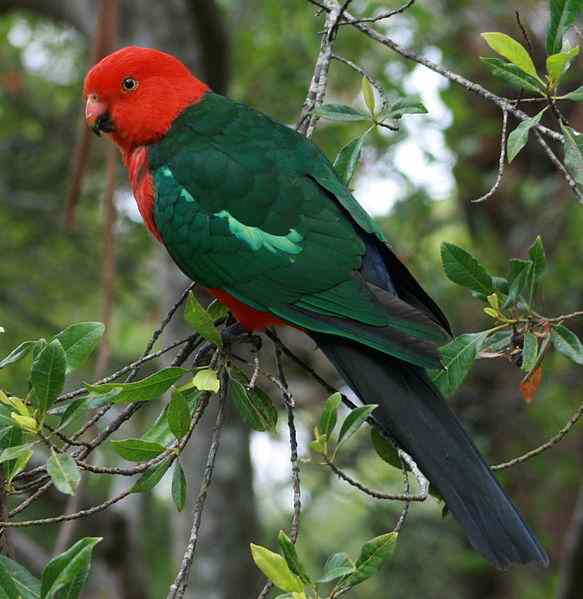
the king parrot, a fairly large parrot, crimson head and chest, green back and wings |
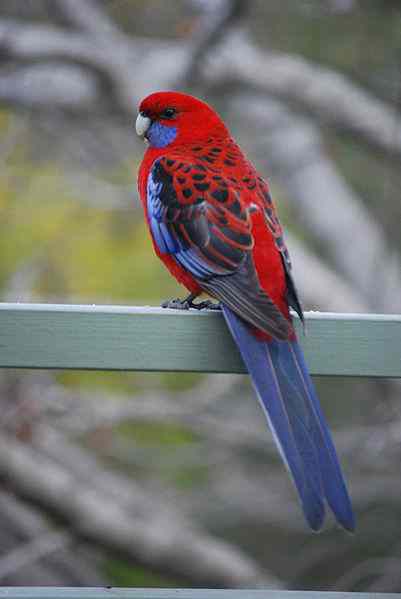 the crimson and eastern rosellas, brilliant everywhere |
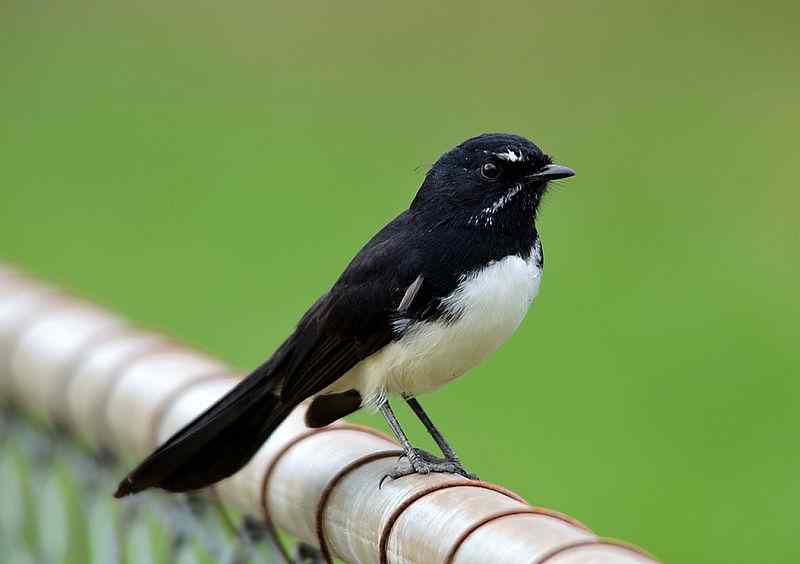
the willie wagtail, unmistakably dapper in black and white and with its chattering song |
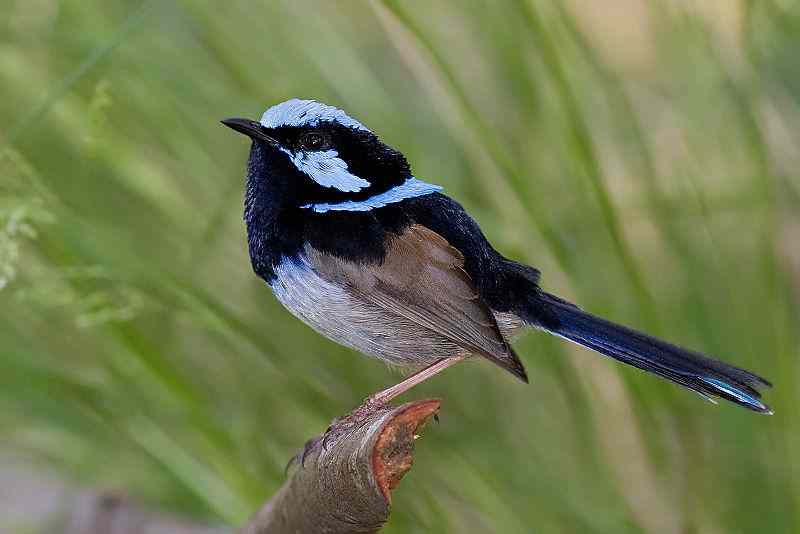 the superb fairy wren, tiny with brilliant blue heads on the males and stick-straight tails. (Studies done on the Australian National University campus describe shocking promiscuity.) |
At twilight, possums and grey kangaroos appear in the trees and shrubs of many suburbs. A platypus is rumoured to live in Sullivans Creek, which flows through the centre of the Australian National University's campus. The local bird watching group, however, closely guards the secret of its whereabouts.
The flora includes numerous species of wattle, producing glorious yellow blossoms at the end of winter and in spring, pink-flowering fruit trees that line many streets, and eucalypts mixed in with European and North American species. It is said that Canberra contains more trees per capita than any other Australian city -- some eight million. The most notorious of the imported trees are the cottonwoods that are abundant on the Australian National University campus; tradition among students has it that if you have not begun studying for exams by the time the cotton fluff begins to cover the ground like snow in October, it is too late to have a successful pass.
Conscious efforts in the early years by the government saw the establishment by Thomas Weston of an experimental nursery at Yarralumla which still provides residents with appropriate trees and shrubs, free of charge to owners of new homes.
History
Canberra's early history commences
with an acrimonious debate about the location for a new
national capital, which began with Australia's Federation in
1901. Sydney and Melbourne were felt to be too caught up in
interstate rivalry. After examining several other possible
locations, and basing their decision on the report of surveyor
Charles Scrivener, the officials finally chose the site of
Canberra in 1909. They maintained that the area's physical
situation would enable the development of a 'beautiful city,
occupying a commanding position, with extensive views...' At
the time, Canberra consisted mainly of the estate of Duntroon,
founded by the Campbell family in the 1830s, and several
substantial sheep stations.
Despite the supposed failure of Griffin's Canberra design, his basic ideas remain the foundation of the city's layout, in which the surrounding hills act as focal points for the main streets of a 'garden city', with a central lake surrounded by triangles of avenues. Thus at the centre is Capital Hill, the site of the permanent Parliament building; from here one looks across to the main ceremonial route, Anzac Parade, at the end of which is the War Memorial. Other ceremonial buildings are placed in a 'governmental triangle' below the Parliament and along the main lake basin. Griffin also envisioned the self-contained suburbs, each with its own shops and school, with no front fences to the houses and no buildings constructed above a certain point on the hills. Initially, suburbs were designated by class of public servant to occupy them, and the houses were built accordingly; while these distinctions have dwindled as the suburbs have expanded, the 'garden' suburbs of the inner north near the Parliament Building and around Civic Centre still retain traces of these elitist designations.
The capital was officially named Canberra (with accent on the first syllable) by
 Lady Denman, wife of
the Governor-General, on 12 March 1913; the day is still
celebrated as Canberra Day. As photographs (and cartoons) of the
day indicate, the ceremony took place in a dry dusty field with
little sign of habitation. Initially conditions here were
primitive, with inadequate housing for the early government
officials, and very few additional facilities; even the Vice
Regent had to spend the night in a tent in Acton. By the time
the 'temporary' Parliament House was completed in 1927 (it
served its purpose for 60 years), a few public buildings
existed, and some public servants had been transferred from
Melbourne to the city, where they were housed either in hotels
or government-built boarding houses.
Lady Denman, wife of
the Governor-General, on 12 March 1913; the day is still
celebrated as Canberra Day. As photographs (and cartoons) of the
day indicate, the ceremony took place in a dry dusty field with
little sign of habitation. Initially conditions here were
primitive, with inadequate housing for the early government
officials, and very few additional facilities; even the Vice
Regent had to spend the night in a tent in Acton. By the time
the 'temporary' Parliament House was completed in 1927 (it
served its purpose for 60 years), a few public buildings
existed, and some public servants had been transferred from
Melbourne to the city, where they were housed either in hotels
or government-built boarding houses. Development of the new capital was hampered first by the Depression, then Second World War; only in the 1960s did the city take off, with the final implementation of the outer suburb centres as had been envisioned from the beginning.
Walter Burley GriffinWalter Burley Griffin (1876-1937) was born and raised in Chicago. He studied architecture at the University of Illinois and worked in the office of Frank Lloyd Wright, where he met his wife Marion Lucy Mahoney, an architect in her own right. Wright's stylistic principles of organic design, in keeping with the natural surroundings, are quite evident in Griffin's own designs. Legend has it that it was the skill of Marion's drawings which influenced the |
It is only in recent years that Canberra has lost some of its negative reputation (in the words of one early parliamentarian, 'a waste of a good sheep paddock'). The number of official cultural institutions has increased and the population has reached a substantial size, already much larger than Burley Griffin's plan had ever envisioned. Historian Keith Hancock describes the city in an equivocal manner recognisable to many Australians: Canberra, now that I saw it again, both irritated and charmed me, as it has always done. Charles Hawker used to say that it was a good sheep station spoilt. It is meticulously planned, yet it sprawls. Its elaborate geometry is lost in verdure. It lacks vertical lines. Its domestic architecture is bijou. Its red roofs are clamorously at war with the Australian blue and umber. But its gardens are glorious in leaf and flower. Its encircling hills are enchanting. Its early-morning light is so liquid and mellow that I fancied myself drinking it out of a bowl. The addition of Lake Burley Griffin, which was filled in 1964, and the
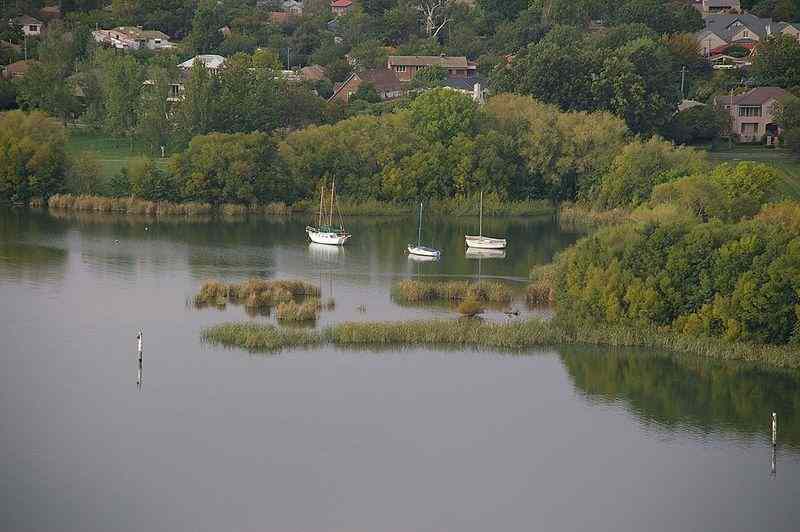
|
 |
increasing popularity of native species for gardens since Hancock wrote would have heightened his appreciation. The amoebic extension of its suburbs would have offended him further. |
A tour of Canberra
Because of the distances between attractions, Canberra's sites of interest are not easily accessible on foot if you set out from the Civic Centre -- the middle of town, which you could easily miss if you were not informed that it is such. Directions for excursions will begin here, but in most cases, you must expect a substantial walk, or take a bus or car to your destination. Despite its relatively small size, Canberra's circular plan and the sprawl of the suburbs often makes it difficult to get oriented in terms of directions; even visiting Australians complain of getting lost. Use the flagpole of the New Parliament building on Capital Hill and Telstra Tower on Black Mountain as landmarks to establish directions. That said, the ACT Centenary Trail is a 145km self-guided walking and riding trail of the entire Territory.Australian National University
From Civic, it is possible to walk to the campus of the Australian National University (ANU), at the foot of Black Mountain to the west of downtown, c 15-minute walk, about 1.5km. Although the university was not established until after the Second World War, a number of earlier structures on its campus and exhibits mounted by its departments make for an entertaining walking tour.
Occupying the site Walter Burley Griffin planned for a university in his original design of the national capital, ANU was established as Canberra University College of the University of Melbourne in 1929. Parliament established the university as presently constituted in 1946. Initially, it occupied rooms in the old Canberra Hospital and Acton area residences. The university is comprised today of both research schools and a teaching faculty. Undergraduates were first admitted as late as 1960.
On an approach to the campus from Civic along Gordon Street is Ian Potter House, formerly Beauchamp House. This two-storey I-shaped building with balconies and wisteria arbours on either side was built in 1927. A neo-Colonial design by Anketel and Kingsley Henderson, it originally housed female government workers who had been transferred to the new seat of government from Melbourne (see also Gorman House). It was converted to office space in 1972 and refurbished to its current use in 1987 by the Australian Academy of Science. While the central reception and banquet areas and the exterior remain pleasant, most of the refurbishment is of a utilitarian nature.
The Academy of Science (1958)
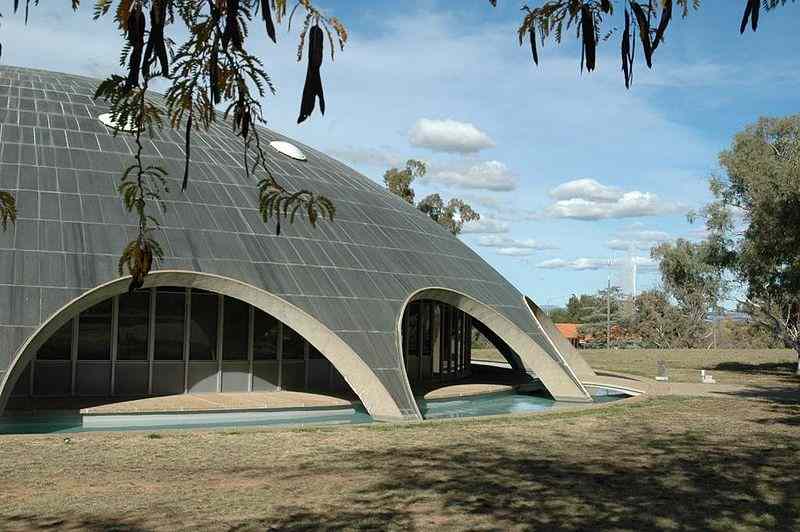 also uses the
interesting bowl-shaped building with scalloped arches and moat
located across the way to the west. The design is by Grounds
Romberg, and architect Robin Boyd, author of the influential
book, The Australian Ugliness (1960), which bemoans
Australian suburban architecture.
also uses the
interesting bowl-shaped building with scalloped arches and moat
located across the way to the west. The design is by Grounds
Romberg, and architect Robin Boyd, author of the influential
book, The Australian Ugliness (1960), which bemoans
Australian suburban architecture. Across the street from the Academy of Science on McCoy Circuit is the National Film and Sound Archive (t 800 067 274, open weekdays 09.00-17.00, weekends 10.00-17.00), the main building of which was formerly the Anatomy Building. Designed by W. Hayward Morris and built in 1929-30, the ornament includes Art-Deco-incised concrete and large wooden doors at the entrance. The faunal motifs include a stained glass platypus in the foyer ceiling and koala friezes on the plaques in the courtyard. The marble floor continues the geometric motif of the doors. Recent expansion has been complementary to the original structure.
The Film and Sound Archive's exhibit documents Australia's entertainment industry. Several small viewing rooms present silent and early spoken films and radio dramas, and regular exhibitions focus on aspects of Australia's prolific film, radio and recording history. The archive is a great place to bring the children. The tiny gift shop offers a number
of tapes and videos on similar themes.
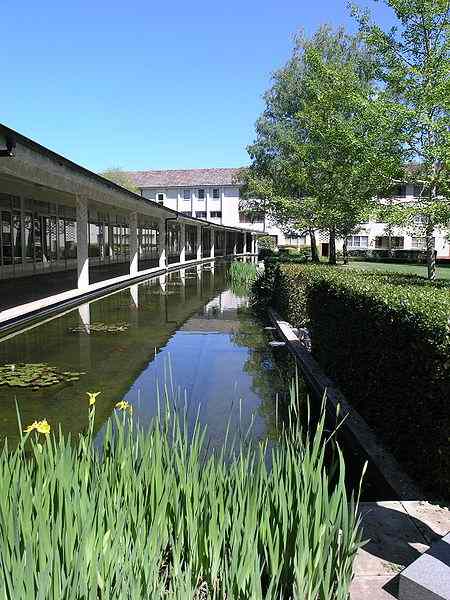
On Liversidge Street to the north of the archive is University House, designed by Brian Lewis in 1952. The house serves as a centre for university life, providing conference spaces, accommodation for visiting scholars and the general public, and eating facilities. Architecturally it is a delightful example of 1950s integrated design, with lovely grounds and built-in furniture in the apartments. The courtyard includes a calming fish pond from which kookaburras often catch fish, and a large beer garden offers a pleasant environment for lunch or drinks. It recently received an award for enduring architectural design in the ACT.
Leaving University House from the main entrance, walk north down Liversidge Street to Ellery Crescent and cross to enter the Canberra School of Art (t 02 6125 5841). Part of the ANU since 1992 as the Canberra Institute of the Arts, the school is housed in Canberra's first secondary school (1938-68). Architect Daryl Jackson's extension to the original school building succeeds admirably. The Art School's gallery features contemporary and student artist exhibits. The school is also involved in the operation of the Drill Hall Gallery on the northern edge of the campus (follow Childers Street from the front of the school, then right on Hutton Street), which presents an extensive number of art exhibitions throughout the year (t 02 6125 5832, Wed-Sun 12.00-17.00).
The other school of the Canberra Institute of the Arts is the School of Music, housed down the hill from the School of Art (its progressive Jazz Department lives in the suburb of Manuka, where recitals and performances are also held). The school carries out an active performance schedule, with major concerts and operas staged as well as first-rate recitals by students in the school's auditorium, Llewellyn Hall. Almost all of these are open to the public, many of them free (t 02 6249 5700).
From the Music School, walk across the car park and down to Ellery Crescent again, at the end of which is the A.D. Hope Building, named in honour of Australian poet Alec Derwent Hope (b. 1907), who was for many years ANU's Professor of English. In this nondescript building the Classics and Archaeology and Anthropology Departments have mounted exhibits. The displays include a large scale model of 4C AD Rome, a replica of a large Aztec Calendar Sun Stone, and an ambitious presentation of artefacts and coins from Greco-Roman sites. The anthropological exhibit concentrates on Australian Aboriginal foods, hunting and gathering implements, and representative decorative artefacts.The displays are all in the public spaces of the building, open every weekday.
Acton era buildings
On the south end of campus, walking the other direction on Liversidge Street from University House, a number of buildings from the earliest period of Canberra's federal history are still in use. These include Old Canberra House, which is now a cafe and pub with an open billiard table. Although substantially remodeled, the interior rooms and woodwork remain attractive in what was originally the residence of David Miller, the city's first planning authority supervisor. Directly across the street are the endangered buildings that were originally the single men's quarters for the officers of departments supervising the planning of Canberra. Built in 1913, these single-storey, weatherboard residences have housed students and staff child care services. For some reason they are the bane of the university's administration and have been imperiled for a considerable time. Further down this road is Acton Peninsula on the lake. Once the site of the Royal Canberra Hospital, an unfortunate demolition in 1997 was carried out to make room for other buildings on this valuable piece of real estate.
The ANU campus also houses several excellent library collections. Menzies Library has internationally recognised collections of Asian literature and culture, as well as holdings on Aboriginal culture. Chifley Library is the main undergraduate library, while Hancock Library houses science and technology.
Australian Botanic Gardens
Directly north of the Australian National University campus, on Clunies Ross Street at the base of Black Mountain, is the entrance to the Australian National Botanic Gardens (t 02 6250 9540, daily 08.30-17.00, later in January). The tourist bus route starting at Civic, reaches the gardens among its numerous stops, as well as travelling to Black Mountain and Telstra Tower.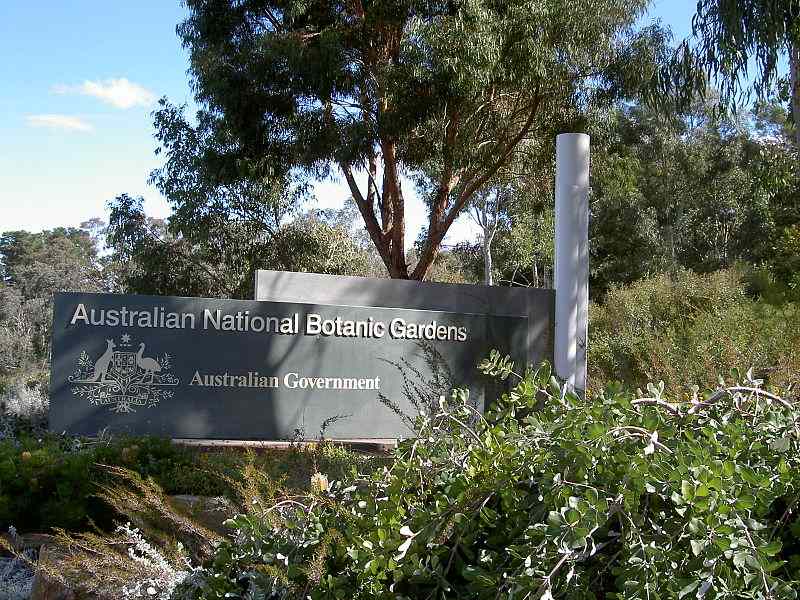
As early as 1935, plans were underway for the establishment of a national botanic gardens in Canberra. Planting for the gardens began in the 1950s, under the direction of botany professor Lindsay Pryor to landscaping designs by Otto Ruzicka, but the grounds were not officially opened until 1970. From the beginning, the gardens were at the forefront of horticultural experimentation, at a time when little was known about the propagation of native species. They now present a glorious survey of Australia's indigenous species and representative plant life, from authentically constructed rainforests of the northern region, scrupulously maintained with climate and humidity control, to a display of plants from the more hardy climactic conditions of Tasmania.
Ambitious public programmes serve to enlighten the public concerning conservation, native habitats, the dangers of introduced species of flora and fauna, and the delights of Australian wildlife and bushlife. Events include activities surrounding Wattle Day on 1 September, and other reminders of Australia's unique natural resources. Regular guided tours are available, as well as birdwatching walks.
The visitor's centre includes an excellent bookshop, as well as a small exhibition space, a theatre, and a plant library for serious researchers. The grounds also contain an education centre, where workshops and classes are conducted, and a popular cafe on a picnic green, where cheeky kookaburras, wattle birds, and magpies come to share in your lunch. Lizards and the larger dragons can be seen sunning themselves on the rocks of the nearby pond.
CSIRO
Clunies Ross Street is also the location of the main offices of the Commonwealth Scientific and Industrial Research Organisation, or CSIRO. Established in 1926, the organisation is the country's premier research facility in all branches of science, and has made internationally significant discoveries, especially in plant technology, entomology, forestry and mineralogy. The process of gene-shearing, first formulated in the laboratories of Plant Industry, was first carried out on this site in the early 1990s. In 1999, CSIRO opened a $5-million Discovery Centre here, with hands-on displays and exhibitions from all divisions of the organisation's interests (t 6246 4646; Mon-Fri 9.00-17.00, weekends and holidays 11.00-14.00, $8 adults $5 children).
Black Mountain
First climbed and surveyed in 1832 by explorers Charles Throsby and James Vaughan, Black Mountain was probably so named because of the thick eucalyptus vegetation that covered the hill; it is only 812m high. Significantly, the
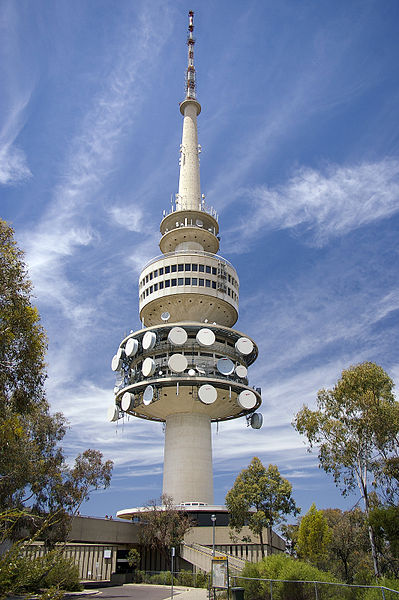 composition of the
mountain is Silurian sedimentary rock, while most others in the
region are igneous; sandstone impregnated with quartz covers the
rock itself. The entire mountain is now a nature reserve, and
has several well-marked walking trails, which allow the visitor
to discover its intriguing vegetation, including several orchid
species and many varieties of acacia and eucalypt. Black
Mountain Tower at the top of Black Mountain has been a
Canberra landmark since it opened in 1979, and it can be seen
throughout the region. The structure itself is a truly hideous
radio tower, but the views from the observation deck are
stunning. The tower also includes the predictable revolving
restaurant, coffee lounge, and viewing galleries. It is open
daily 09.00-20.00, admission cash only $7.50 adults, children
and pensioners $3.00.
composition of the
mountain is Silurian sedimentary rock, while most others in the
region are igneous; sandstone impregnated with quartz covers the
rock itself. The entire mountain is now a nature reserve, and
has several well-marked walking trails, which allow the visitor
to discover its intriguing vegetation, including several orchid
species and many varieties of acacia and eucalypt. Black
Mountain Tower at the top of Black Mountain has been a
Canberra landmark since it opened in 1979, and it can be seen
throughout the region. The structure itself is a truly hideous
radio tower, but the views from the observation deck are
stunning. The tower also includes the predictable revolving
restaurant, coffee lounge, and viewing galleries. It is open
daily 09.00-20.00, admission cash only $7.50 adults, children
and pensioners $3.00.National Museum of Australia
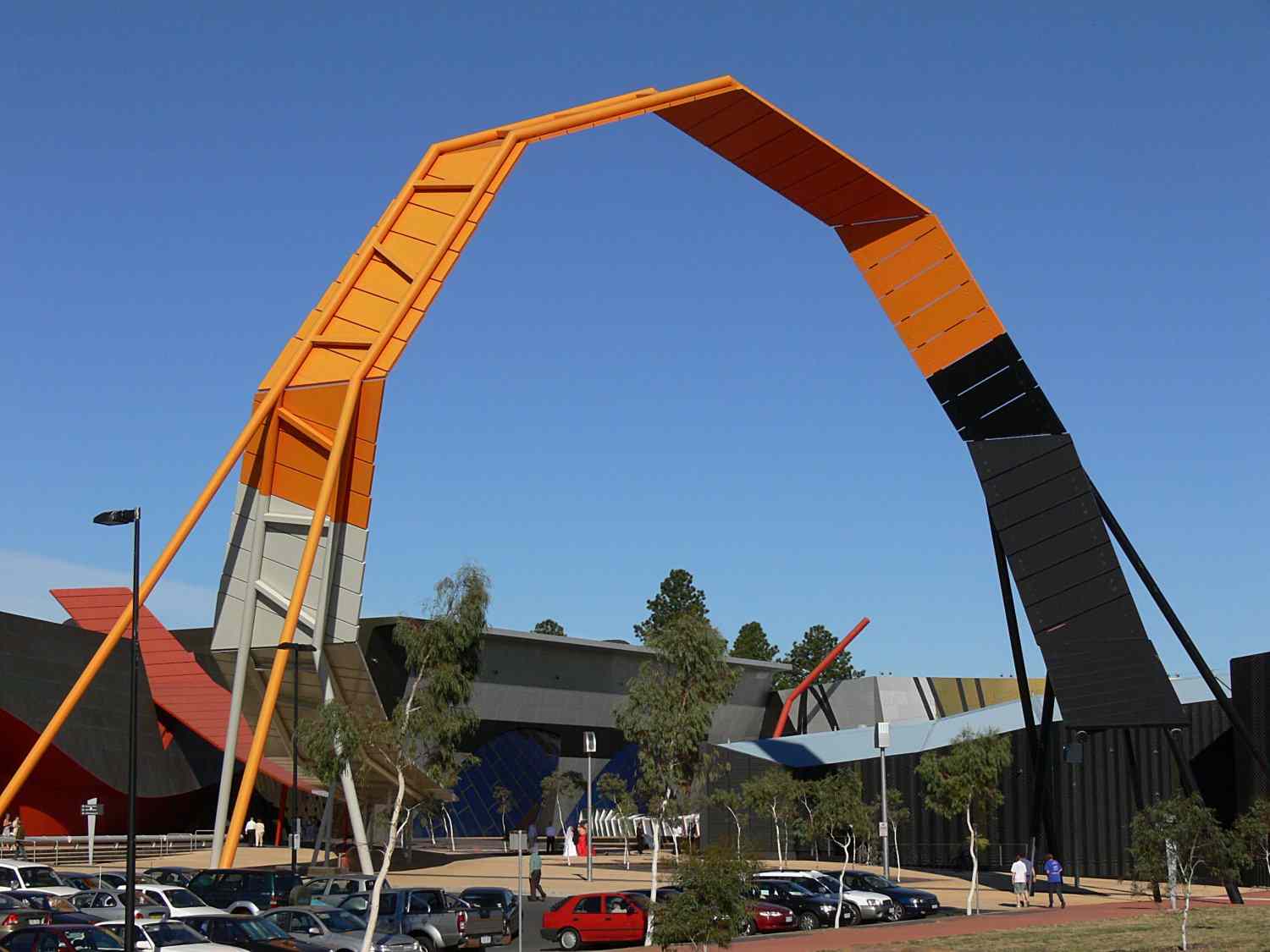
Continuing along Clunies Ross toward the lake; turn right onto Lawson Crescent toward Acton Penninsula and the lake. The Museum, which opened in 2001, was designed by architect Howard Raggatt. His theme was knotted ropes, in the sense that we are all tied together, even entangled with one another. The exhibits do change, but they tend to include at any given time displays devoted to Aboriginal Australians, an ethnic or social group, and a historical period (t 02 6208 5000; weekdays 10.00 - 17.00, weekends and holidays 9.00-17.00). Across the parking lot is AIATSIS, the Australia Institute of Aboriginal and Torres Strait Islander Studies.
Parliamentary Triangle
From Civic, you can take one of several buses across the lake at Commonwealth Bridge to the site of the most important public buildings, what is now known as the Parliamentary Triangle. A walk across the Commonwealth Bridge is also possible, and will take about 20 minutes, affording some pretty views of the lake towards the Brindabella mountain range. On the left, after City Hill and onto the bridge, you will see the Archbishop's Residence, built in 1938 (a private residence). Further on, you may enter Commonwealth Park at Regatta Point, where the Regatta Point Lookout and Exhibition Centre provide a display on Canberra's history. This is also the site of Floriade, the floral festival in September and celebrations during Canberra Day in March. On the lake here is the Captain Cook Memorial Globe and Jet Fountain, which rises up to 135 metres at set times each day, and has given rise to comparisons of Canberra with Geneva, Switzerland, and its similar water fountain.
After crossing the bridge, on the left to the west are two important early buildings, first the Albert Hall (on the right below) and then Hotel Canberra. Albert Hall was completed in 1928 and was the site of much of the capital's
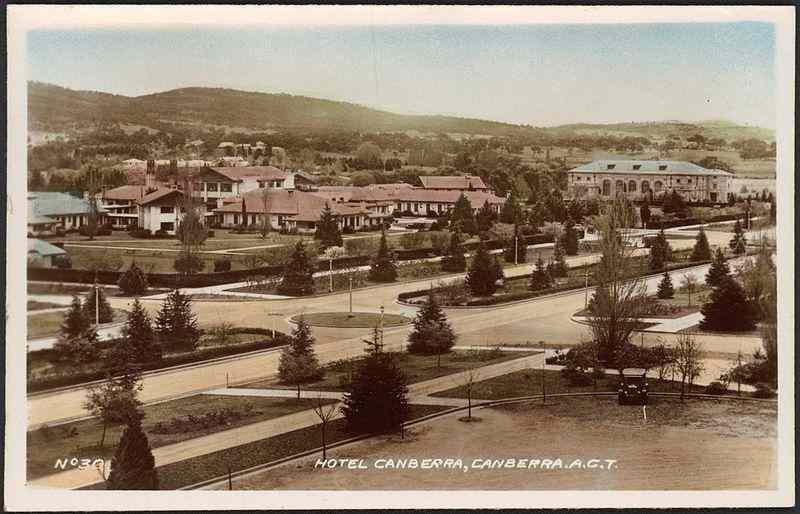 early social life; a
young Joan Sutherland sang here in 1950, and in 1954, the Royal
Commission into the infamous Petrov affair, concerning the
defection of a supposed Russian spy, was housed on the site.
early social life; a
young Joan Sutherland sang here in 1950, and in 1954, the Royal
Commission into the infamous Petrov affair, concerning the
defection of a supposed Russian spy, was housed on the site. Hotel Canberra (now the Hyatt) is an important monument in the capital's political history. J.S. Murdoch, chief architect for the Department of Works and Railways, was directed to design 'on garden pavilion lines'. The resulting hotel, built in 1922-25, was intended to appear home-like, and provide privacy for those civil servants and Canbparticularly elected politicians (most particularly Liberal, i.e., conservative, politicians) staying for longer periods. It is one of the rare examples in Australia of Beaux-Arts planning influenced by American Prairie-style architecture. The gardens and lawns, like many public places in the city, are famed for roses. These were encouraged by A.E. Bruce, successor of Thomas Weston as ACT gardener, who planted 155 varieties along Commonwealth and Kings Avenues.
The hotel was closed in the 1970s and, to the horror of right-thinking citizens, was in danger of being demolished. Fortunately, the Hyatt Hotel renovated and enlarged the building and grounds, reopening the hotel in 1988. The visitor should notice the paintings in the lobby which are conscious imitations in the style of identifiable Australian artists, such as Rupert Bunny and George Lambert.
As the Commonwealth Bridge ends, turn left (east); the road is officially labelled as King Edward Terrace, although it is rarely called that. It is here along the lakefront that most of the 'national' buildings are located. First on the left is the National Library of Australia (t 02 6262 1111, open Mon-Thurs 09.00- 21.00, Fri and Sat 09.00-17.00, Sun 13.30-17.00).
Built in 1968, the building's design is in a diluted neo-classical modernist style, similar to the LBJ Library in Texas, or any other number of public buildings erected in the 1960s and 70s. The entrance lobby contains stained-glass windows by the artist
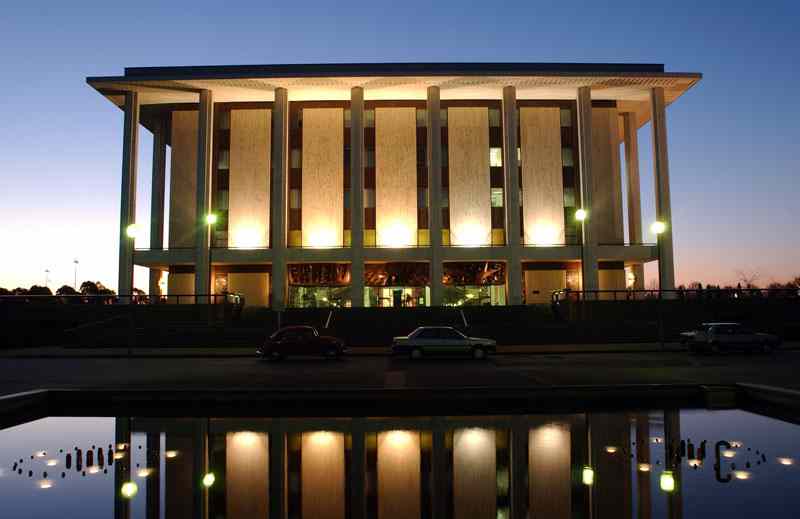 Leonard French; these
are now visible in the lobby's restaurant. The library, aside
from being the national book repository, also contains extensive
pictorial, audio-visual, manuscript and oral history
collections. Many of these resources are now available on
state-of-the-art computer programmes. The Reading Room has
generous opening hours, during which time the general public has
access to the collections. The library also presents impressive
exhibitions based on its collections, and (at the time of
writing) free movies on Thursday nights. The library's bookshop
provides a particularly good selection of books and cards on
Australian themes.
Leonard French; these
are now visible in the lobby's restaurant. The library, aside
from being the national book repository, also contains extensive
pictorial, audio-visual, manuscript and oral history
collections. Many of these resources are now available on
state-of-the-art computer programmes. The Reading Room has
generous opening hours, during which time the general public has
access to the collections. The library also presents impressive
exhibitions based on its collections, and (at the time of
writing) free movies on Thursday nights. The library's bookshop
provides a particularly good selection of books and cards on
Australian themes.Next in line along this promenade is Questacon, the National Science and Technology Centre (t 02 6270 2800, daily 9.00-17.00, $20 adults, $15 children). The building was partially a gift of the Japanese government to honour Australia's bicentennial in 1988. The building houses some 150 'hands-on' exhibits in six different galleries designed around a 27m-high drum around which a spiral walkway leads to all levels. Children are especially impressed with the simulation of an earthquake and the lightning chamber.
Walk south across the Parliamentary Lawns by the Treasury Building to reach King George Terrace and Old Parliament House. The lawns themselves have been the site of several demonstrations, and still house an Aboriginal Embassy, reopened in commemoration of the first embassy of protest established here in 1972; it still serves as the rallying point for Aboriginal demonstrations
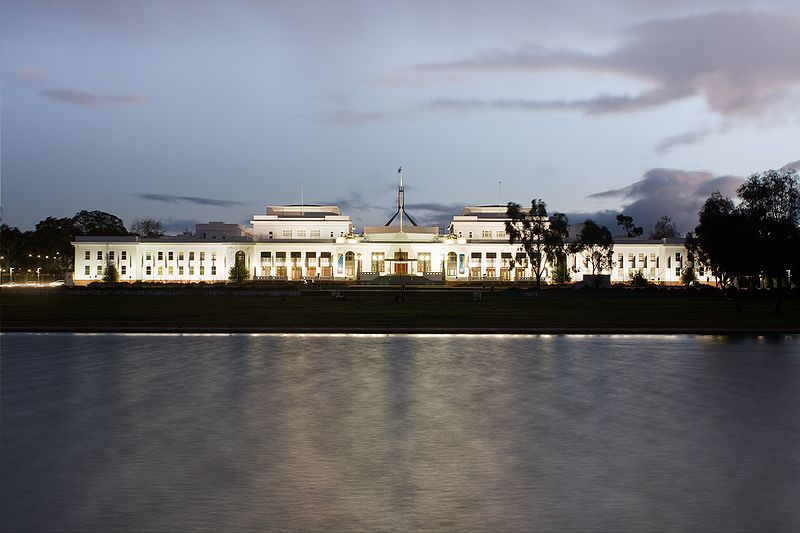 concerning land rights
and other causes, and is usually occupied by members of
Aboriginal groups. The Old Parliament House was opened by the
Duke of York in 1927 and designed by J.S. Murdoch at a cost of
£174,000. The opening ceremony included singing by the famous
Australian soprano Dame Nellie Melba, as well as an ill-planned
reception that saw thousands of meat pies wasted and buried in
the back paddock. Many more visitors had been expected, but
failed to show because the day was not a public holiday and
transportation to Canberra was still primitive. This supposed
'temporary' building was finally vacated in 1988 with the
opening of the New Parliament House; it is still fondly
remembered as the site of much of Australia's political history.
Stories circulate that the place is haunted by as many as three
ghosts, perhaps disgruntled politicians. For years in the 1950s,
Mr Bainbridge, the parliamentary barber, was also the
parliamentary bookie and privy to years of political secrets. It
was on the steps of this building on 11 November 1975, that the
proclamation dissolving Gough Whitlam's government was read, and
it was here that subsequent protesters jeered the
Governor-General John Kerr for his actions. Fortunately, recent
renovation and the installation of several exhibitions and
museum spaces assure its continued use and care. Its
architecture is a pleasant example of a modified Australian
Federation design, with loggias and simple open spaces, although
several wings and extensions were 'added on' over the years. The
visitor can take advantage of well-informed tours by volunteer
guides, or simply look around independently, which allow views
of the House of Representatives and the Senate.
concerning land rights
and other causes, and is usually occupied by members of
Aboriginal groups. The Old Parliament House was opened by the
Duke of York in 1927 and designed by J.S. Murdoch at a cost of
£174,000. The opening ceremony included singing by the famous
Australian soprano Dame Nellie Melba, as well as an ill-planned
reception that saw thousands of meat pies wasted and buried in
the back paddock. Many more visitors had been expected, but
failed to show because the day was not a public holiday and
transportation to Canberra was still primitive. This supposed
'temporary' building was finally vacated in 1988 with the
opening of the New Parliament House; it is still fondly
remembered as the site of much of Australia's political history.
Stories circulate that the place is haunted by as many as three
ghosts, perhaps disgruntled politicians. For years in the 1950s,
Mr Bainbridge, the parliamentary barber, was also the
parliamentary bookie and privy to years of political secrets. It
was on the steps of this building on 11 November 1975, that the
proclamation dissolving Gough Whitlam's government was read, and
it was here that subsequent protesters jeered the
Governor-General John Kerr for his actions. Fortunately, recent
renovation and the installation of several exhibitions and
museum spaces assure its continued use and care. Its
architecture is a pleasant example of a modified Australian
Federation design, with loggias and simple open spaces, although
several wings and extensions were 'added on' over the years. The
visitor can take advantage of well-informed tours by volunteer
guides, or simply look around independently, which allow views
of the House of Representatives and the Senate.The Old Parliament House is now the home of the Museum of Australian Democracy (t 02 6270 8222, daily 09.00-17.00, ADMISSION $2 adults, $1 children) which presents an excellent range of information on Australian politics and history. The old parliamentary dining room is now a public restaurant.
Hotel Kurrajong
Exiting Old Parliament House, turn right on King George Terrace, proceed right into Walpole Crescent to National Circuit; turn left to find Hotel Kurrajong one block south after Kings Avenue. This hotel was also designed by J.S. Murdoch in 1925 and built by Colonel Walker. It lacks the aesthetic extent of Prairie School style of the Canberra Hotel and features central courts enclosed by two-storey pavilions and central communal blocks which gives it a less domestic and more institutional feeling. This was the hotel where most members of Parliament stayed when they were in town without their families. Labor Party MPs and workers preferred this hotel because they could walk to Parliament from it. Those MPs who early resided in Canberra with their families bought homes in the nearby 'garden' suburbs Red Hill or Telopea Park. It was here that Ben Chifley, former Labor Prime Minister and head of the Opposition, died on 13 June 1951. The hotel has recently had a major facelift, which restored the lobby to its original Art Deco style; it is now an International School of Hotel Management.
New Parliament House
From National Circuit, walk back to Federation Mall and up the hill to the New Parliament House (t 6277 7111, daily 09.00-17.00, extended when Parliament in session, visitors have access to the galleries when Parliament is in session). This imposing edifice is one of the most ambitiously symbolic buildings in the world: every stone, piece of wood, and colour is representative of some aspect of Australia and its democratic government, with conscious metaphorical considerations of power and geography.Designed by the architects Mitchell, Giurgola and Thorp, the building was finally completed at a cost of $1.1 billion.
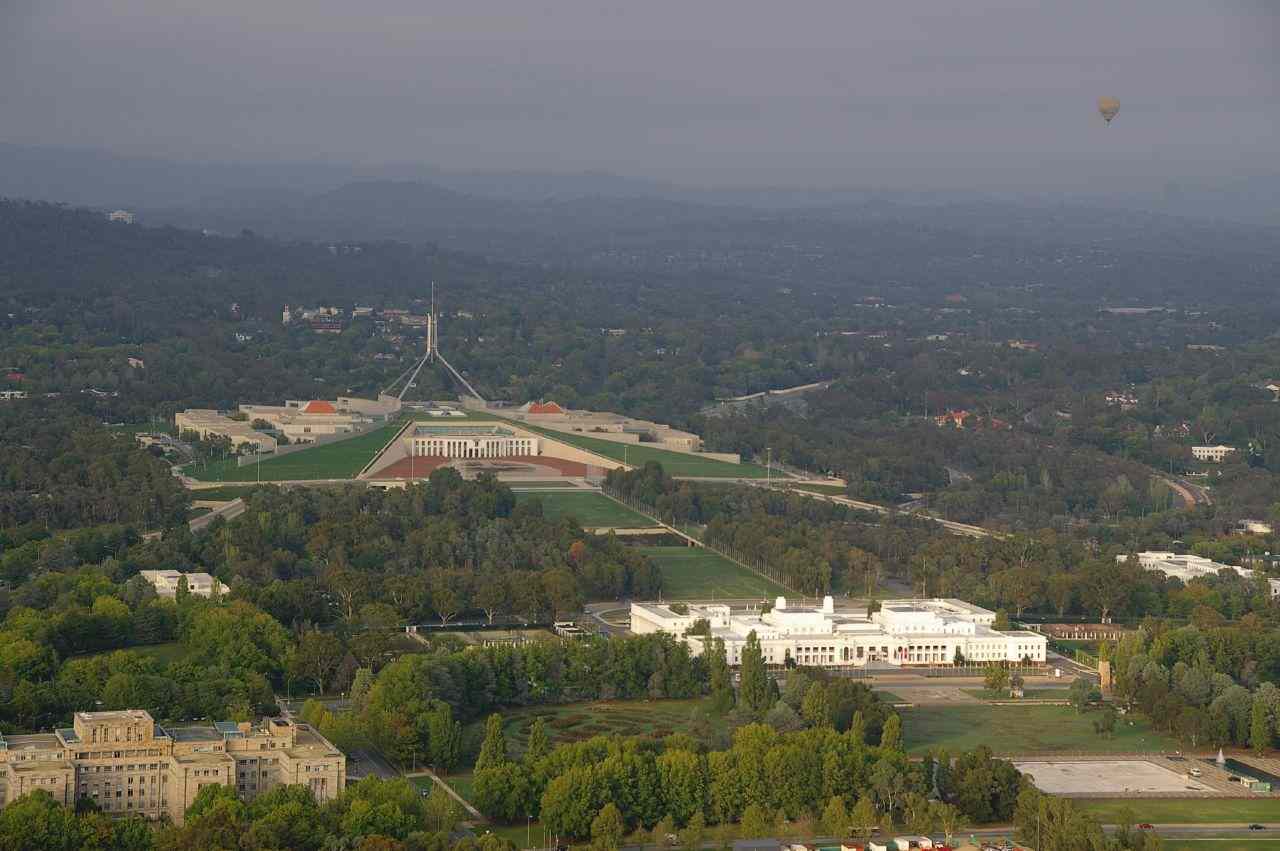 Amazingly, the building
opened on time, in the Bicentennial year, on 9 May 1988. The
architects' aim was to emphasise the hill ('for centuries ...
occupied with structures as signs of possession and power') as
well as the building's profile and the land axis, which mean to
affirm Burley Griffin's original scheme. The building is
actually placed into the hill, and citizens can-again, with
great symbolic intention, intimations of the relationship of
government to the people-walk down from the impressively
imposing flagpole (at 81m, the highest flagpole in the country)
onto the grass slopes surrounding it. The view of the city from
this point is impressive, and the circular design of the
capital's road system and monumental buildings is most obvious.
The profile of the flagpole, which can be seen from anywhere in
Canberra, has become a near-iconic landmark.
Amazingly, the building
opened on time, in the Bicentennial year, on 9 May 1988. The
architects' aim was to emphasise the hill ('for centuries ...
occupied with structures as signs of possession and power') as
well as the building's profile and the land axis, which mean to
affirm Burley Griffin's original scheme. The building is
actually placed into the hill, and citizens can-again, with
great symbolic intention, intimations of the relationship of
government to the people-walk down from the impressively
imposing flagpole (at 81m, the highest flagpole in the country)
onto the grass slopes surrounding it. The view of the city from
this point is impressive, and the circular design of the
capital's road system and monumental buildings is most obvious.
The profile of the flagpole, which can be seen from anywhere in
Canberra, has become a near-iconic landmark.The main entrance includes a ceremonial pool with a huge rock mural designed by Aboriginal artist Michael Nelson Tjakamarra and completed out of granite; the architects maintain some reference to Aboriginal Australia 'outside', while European/Western references dominate 'inside'. Entrance into the grandiose foyer emphasises the building's post-modernist elements, with the elaborate blend of coloured marble columns; art-historical references to monuments of power, such as the Pantheon and Persepolis; and inlaid panels out of Australian woods.
The Great Hall, the main ceremonial space, includes an enormous tapestry designed by prominent Australian artist Arthur Boyd. The side galleries, off the foyer and up the staircases, include changing displays of art from the substantial parliamentary art collections. From this level, one can then proceed to view chambers of both the House of Representatives and the Senate; of interest here is to see how the traditional colours of green for Representatives and red for Senate have been turned into post-modernist pastels. Visitors may attend sessions when Parliament is sitting. The Parliament House, given its ambitious sense of ceremony and symbolism, has become the most popular destination for tourists in the capital; consequently, tours are thorough and frequent, with well-informed guides (tours in other languages are readily available).
High Court of Australia
On the other side of the Parliamentary Lawns, back on King Edward Crescent, is the High Court of Australia. Designed by the architectural firm of Edwards, Madigan, Torzillo and Briggs (the design leader was Chris Kringas), the building was not completed until 1980. Along with the impressive waterworks at the front of the building, the structure's central foyer has been described as 'one of the most dramatic spaces in Australia'. On the north wall of the Great Hall, known as Constitution Wall, is a mural by the Australian artist Jan Senbergs that depicts the functions and ideals of the High Court. On the south wall, another Senbergs mural presents a symbolic depiction of the Australian states. The Great Hall often houses art exhibitions and other displays. Visitors may also view the three courtrooms, where questions concerning the constitutionality of an issue, most of them having come as appeals from state and federal jurisdictions, are considered. The most famous appeals presented here were, in 1982, the constitutionality of the federal government's intervention to block the building of Tasmania's Franklin River dam; and in 1983-84, the notorious Chamberlain case, in which appeals were made to drop the murder charge against Lindy Chamberlain. Most recently, the court has ruled in favour of Aboriginal Native Title claims, in the famous Mabo case and the Wik decision. Both of these rulings were major breakthroughs in the battle for Aboriginal land rights.
|
Lindy
Chamberlain
The case of Li
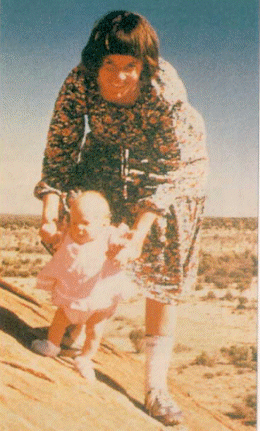 Lindy Chamberlain preoccupied
Australians for much of the 1980s. In August 1980
Azaria Chamberlain, the nine-week-old daughter of
Seventh-Day Adventists Lindy and Michael Chamberlain,
disappeared from a tent near Uluru (Ayers Rock) where
the family was camping. Lindy was convinced a dingo
had taken her baby; the body was never found. The
subsequent trial first ruled in the family's favour,
then decided that Lindy was guilty of murder. This
verdict, based largely on innuendo, the belief that
dingoes would not take babies, and the assertion that
the Chamberlains were acting bizarrely, saw Lindy
sentenced to life imprisonment in 1982. Appeals to the
High Court were unsuccessful in overturning the
verdict. In February 1986, a baby's jacket, believed
to be Azaria's, was found near Uluru, leading to
Lindy's release and a judicial inquiry, which found
that the dingo story was probably true. In 1988 both
Chamberlains were fully exonerated. The trial formed
the basis for the 1988 film Evil Angels (A Cry in the
Dark), directed by Fred Schepisi and starring Meryl
Streep. In 1992 Chamberlain was awarded $1.3 million
from the Commonwealth government in compensation for
wrongful imprisonment. In 2012 a
fourth inquest found that Azaria had been taken by a
dingo. Thirty-two years after the event, the
Coroner apologized to the Chamberlain family and made
an amended death certificate immediately available. Lindy Chamberlain preoccupied
Australians for much of the 1980s. In August 1980
Azaria Chamberlain, the nine-week-old daughter of
Seventh-Day Adventists Lindy and Michael Chamberlain,
disappeared from a tent near Uluru (Ayers Rock) where
the family was camping. Lindy was convinced a dingo
had taken her baby; the body was never found. The
subsequent trial first ruled in the family's favour,
then decided that Lindy was guilty of murder. This
verdict, based largely on innuendo, the belief that
dingoes would not take babies, and the assertion that
the Chamberlains were acting bizarrely, saw Lindy
sentenced to life imprisonment in 1982. Appeals to the
High Court were unsuccessful in overturning the
verdict. In February 1986, a baby's jacket, believed
to be Azaria's, was found near Uluru, leading to
Lindy's release and a judicial inquiry, which found
that the dingo story was probably true. In 1988 both
Chamberlains were fully exonerated. The trial formed
the basis for the 1988 film Evil Angels (A Cry in the
Dark), directed by Fred Schepisi and starring Meryl
Streep. In 1992 Chamberlain was awarded $1.3 million
from the Commonwealth government in compensation for
wrongful imprisonment. In 2012 a
fourth inquest found that Azaria had been taken by a
dingo. Thirty-two years after the event, the
Coroner apologized to the Chamberlain family and made
an amended death certificate immediately available. |
National Gallery of Australia
Next to the High Court is the National Gallery of Australia (t 02 6240 6411, daily 10.00-17.00), another product of Edwards, Madigan, Torzillo, and Briggs (credited to architect Colin Madigan). Completed in 1982 and opened by Queen Elizabeth II, the severe 'art brut' concrete structure in many ways overwhelms the art inside; a recent renovation of interior spaces has somewhat alleviated this problem (and was greeted with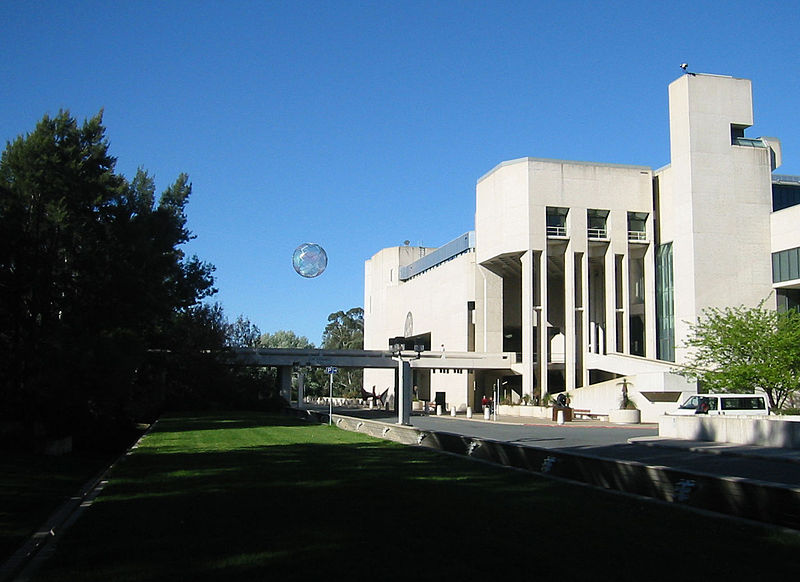 great anger by the
architect himself), although the floor plan still makes it
difficult to know which galleries are where. A recent addition
at the rear of the first floor (Level 4), along with a
wonderfully symbolic garden space by artist Fiona Foley, creates
more pleasing spaces.
great anger by the
architect himself), although the floor plan still makes it
difficult to know which galleries are where. A recent addition
at the rear of the first floor (Level 4), along with a
wonderfully symbolic garden space by artist Fiona Foley, creates
more pleasing spaces.The collection, intended to be considered as the national collection, is a fascinating manifestation of the intrigues of museum and collecting politics faced by galleries attempting to acquire a representative art collection from scratch in the 1970s and 1980s. The most famous example of this interweaving of the political and artistic was the purchase in 1973 of the American painter Jackson Pollock's Blue Poles (1952) for the then unprecedented sum of $1.2 million. The ensuing controversy preoccupied all Australians for months, since the work was purchased with government funds approved by Gough Whitlam. That such an amount should be paid for a non-Australian painting done by 'drunkards', as the newspaper headlines reported, led to parliamentary battles and endless letters to the editor, both pro and con. The painting's arrival and subsequent exhibition in every Australian city saw record crowds come to see the 'million-dollar painting'. In many ways, the Blue Poles incident marks Australia's cultural coming of age. Now, of course, the 'investment' is deemed good 'value for money', as Blue Poles' latest evaluation is $30 million.
Despite the political wrangling, the resultant collections are impressive, and the gallery is worth the trip to Canberra in itself. Currently, the general arrangement of the gallery is as follows, although curators here are wont to rearrange frequently, especially during the run of one of the many 'blockbuster' exhibitions for which the gallery has become famous.
While most of the art works mentioned in the following description are still being displayed, the Museum's exhibits are being thoroughly revised, the Museum is building an addition, and the Memorial Poles are being restored.
Entrance ~ Level 4
The entrance level is actually Level 4; the first gallery is named after Melbourne art patrons and donors the Smorgons. Currently it is devoted to the display of one of the gallery's most significant collections, Aboriginal art. The central focus of this display had been the set of Memorial Poles, created by several Aboriginal artists and communities as a Bicentennial 'gift' to the nation. (This work has now been moved to the gallery behind the bookstore on the same floor.) Traditionally such poles were created as memorials to the dead, in which an individual's bones would eventually be placed. Here are 200 poles from different regions, one for each year of white settlement and black displacement. As the organiser of the project explained, the aim was to 'present Aboriginal culture without celebrating-to make a true statement' about the effects of white-black conflict. Significantly, the poles were originally placed in the gallery's lower level; it is only since the recent growing popularity of Aboriginal art that it has been given pride of place in the first gallery to greet the public.
The walls in the Smorgon Gallery display examples of the enormous variety of Aboriginal art, both traditional and contemporary. Note especially the paintings of Rover Thomas and Emily Kame Kngwarreye, and Lin Onus' witty political sculpture, Dingoes (1989).
Gallery 2 presents, in fairly chronological fashion, modern Western painting, highlighting the gallery's first focus for major acquisitions. This gallery has now been partitioned into three sections, which focuses the works more specifically. Most notable are an early Courbet study for Young ladies on the banks of the Seine (1857); Cézanne's An afternoon in Naples (1877); and two exemplary works by Claude Monet, one of his Haystacks series of 1890, and Waterlilies, painted at Giverny c 1910. Also of note is a delightful painting by the Russian Natalia Goncharova, Peasants dancing (1910-11).
Around the corner from the Monets is the 'wall of Surrealism', focusing on Magical Realist and Surrealist works, most notably Magritte's The Lovers (1928), and Miro's Landscape (1927). Also displayed are reproductions of Duchamp's Bicycle Wheel (1913) and, illuminated on the wall, his Hat rack (1917). Opposite this wall is a case filled with objects of Dada and Surrealism, including Man Ray's The enigma of Isidore Ducasse (1920).
The partitioned space across from this section focuses on the gallery's important works of Abstract Expressionism, with one wall given over to Pollock's Blue Poles (1952). Surrounding works complement and illuminate this aesthetic direction: Pollock's earlier Totem lesson 2 (1945), and the work of his wife Lee Krasner, Cool white (1959). Also displayed are Willem de Kooning's Woman V (1952-53) and Mark Rothko's Brown, black on maroon (1957).
Gallery 3 presents contemporary art, always in rotation. Most likely to be on view is the massive work by the German Anselm Kiefer, Twilight of the West (1989), Chuck Close's Bob (1970), and Francis Bacon's Triptych (1970).
Tucked up next to the stairs is a small gallery which at the moment displays Pre-Columbian and/or African art.
Before proceeding upstairs to Australian art, one must note that Level 4 also houses, at the other end of the building, Nomura Court, evidence of the gallery's recent efforts to establish an important collection of Asian art. Permanent acquisitions are especially strong in Southeast Asian textiles and sculpture.
Level 6
Proceed up the stairs from Gallery 3 to Level 6, or from the Nomura Court side, take the lift and enter the Australian art collection from the other end, which will lead through the galleries backwards chronologically. Australian art is the real strength of the gallery's collection. Throughout the intention has been to integrate all the arts of a period, including crafts and photography, to give a sense of historical context; appropriately, the first galleries devoted to the Colonial period are painted 'Colonial' green. Stellar works here include Augustus Earle's portraits of John Piper and Mrs Piper, c 1826; John Glover's romanticised views of Tasmania from the 1830s; and the artistically crude but historically important work by Benjamin Duterrau, Mr Robinson's first interview with Timmy (1840), championing the efforts of Robinson with the Tasmanian Aborigines. The section also includes superb examples of early Colonial furniture and decorative arts.
The middle gallery concentrates on landscape painting, most notably the various attempts by Europeans to depict Australian vegetation; Eugen von Guerard's View from Mt Kosciuszko (1864), Louis Buvelot's View near Heidelberg (1866), and Nicholas Chevalier's Mt Arapiles and the Mitre Rock (1863), demonstrate distinct applications of European modes.
The next gallery represents the solidification of the Australian 'national' school with the works of the Heidelberg painters, so named for the Melbourne suburb where the artists painted outdoors. Exemplary works of this landscape direction include Roberts' In a corner of the Macintyre (1895), supposedly depicting a bushranger shootout, but more about Australian light and rock; and Arthur Streeton's iconic The selector's hut: Whelan on the log (1890).
You can tell that you have entered the modern era when the gallery walls turn to white; again, the gallery's holdings in 20C Australian art are substantial, with notable examples by George Lambert (Station at Michelago, 1923), Rupert Bunny (Pastoral, 1892), Margaret Preston (Aboriginal design, 1941 and Portrait of a Flapper, 1917) and Grace Cossington Smith (Four panels for a screen, 1929). The most impressive works are those by the artists of the 1930s and 1940s, especially John Perceval's Expressionistic pieces, Albert Tucker's Surrealist series Victory girls (1943), Russell Drysdale's The rabbiter and his family (1938) and Arthur Boyd's many portraits and mythological scenes. An entire wall is devoted to Sidney Nolan's famous series of Ned Kelly paintings, 1946-47. Nolan's works present a narrative well-known to all Australians, while visitors will find the accompanying quotations enlightening about this folk hero, including the explanation of the square black head, which is not, as a New York Times reviewer assumed, meant to represent a television! For more information on Ned Kelly, see the entry under Glen Rowan, Victoria, on the Hume Highway.
Other galleries continue the progression into Australian contemporary art, including works by John Brack, Ian Fairweather, Fred Williams and John Olsen. This floor also has galleries devoted to displays of the gallery's substantial holdings in graphic arts, photography, decorative arts, and travelling exhibitions.
One of the most enjoyable aspects of the gallery is the Sculpture Garden, located between the gallery and the lake and situated amidst native gardens. Exit into the garden from the entrance level. At varying intervals one finds, among others, Rodin's Burghers of Calais (1884; cast 1974), Bourdelle's Penelope (1912), and Bert Flugelman's wonderfully reflective Cones (1982), popular with children. Further on towards the Mirrabook restaurant is the fascinating Fog sculpture by Fujiko Nakaya (1983), which at periodic intervals creates a steamy mist across the ponds.
The north side of Lake Burley Griffin
From the National Gallery, drivers may cross the Kings Avenue
Bridge to explore venues along the lake and up Anzac Parade to
the Australian War Memorial. If coming from Civic, reverse the
process along Parkes Way from Commonwealth Park. The city
sightseeing bus travels here. After crossing the bridge, you
will see directly ahead the Australian-American War Memorial,
unveiled by Queen Elizabeth in 1954. Although the aluminium
shaft is supposed to be topped by a majestic eagle, the odd
angle of its wings has led to its nickname of 'Bugs Bunny'. Surrounding this monument are the offices of the defence forces, regularly voted the ugliest public buildings in Australia (they are currently undergoing major renovation and demolition). Turn left at Morshead Drive, and proceed c 1km to the Royal Military College of Duntroon, on the site of the home of the area's first substantial settler, Robert 'Merchant' Campbell. On the grounds is the original Duntroon House, built by Campbell in 1833 and extended by his son George in 1862. Today it houses the Officer's Mess and Commandant's Office; guided tours are available weekdays from April to October.
Blundells Cottage and Carillon
Return to Morshead Drive and travel west to Russell Drive, c 1km; turn left and continue past the Defence Forces complex, where the road becomes Constitution Avenue; a small road to the right leads to Kings Park on the lake's foreshore at Blundells Cottage (t 02 6273 2667, daily 09.30-16.00). Built in 1858 for one of Duntroon Estate's foremen, this stone cottage is the last example of the many houses built by Campbell for his employees. It was occupied for 50 years, from 1888 to 1933, by George Blundell, along with his wife and eight children. In 1964 it was restored and is now maintained as a museum by the Canberra and District Historical Society.
From here, you can walk along the lakefront southeast to Aspen Island, site of the Carillon. Before walking to the island is the HMAS Canberra memorial, in honour of the Australian cruiser sunk by the Japanese during the battle of Savo Island on 9 August 1942.
The Carillon,
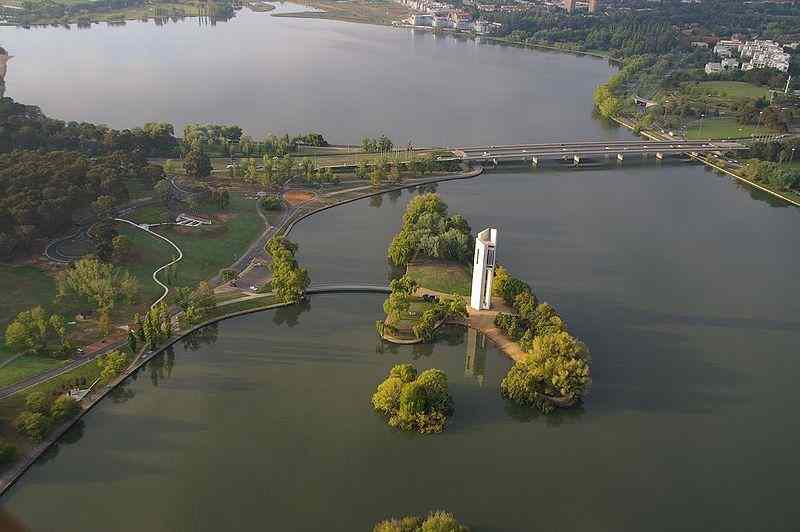 which stands on an
artificially-built island at the edge of the lake, was a gift of
the British government on Canberra's 50th anniversary in 1970.
The bronze bells were cast in Leicestershire and range in size
from 6 tonnes to 7kg. The interior of the Carillon is lined with
English oak. Regular recitals occur at 14.45 on Sundays, and
12.45 on Wednesdays, and other concerts are performed throughout
the summer months. The building itself is open for inspection on
weekends.
which stands on an
artificially-built island at the edge of the lake, was a gift of
the British government on Canberra's 50th anniversary in 1970.
The bronze bells were cast in Leicestershire and range in size
from 6 tonnes to 7kg. The interior of the Carillon is lined with
English oak. Regular recitals occur at 14.45 on Sundays, and
12.45 on Wednesdays, and other concerts are performed throughout
the summer months. The building itself is open for inspection on
weekends. Anzac Parade and Australian War Memorial
Return to Constitution Avenue and proceed west one block to Anzac Parade. This long ceremonial avenue, culminating in the War Memorial and Mount Ainslie behind, is the central axis of Walter Burley Griffin's original plan; from the Memorial itself, you look directly down the Parade to see across the lake the two parliament houses in perfect alignment. Griffin envisioned this route as a recreational and entertainment area, but would not have objected to its current form as the rather sombre location of the national monuments to Australia's fighting forces. Anzac Parade also serves as the route for the solemn commemorative services and parades held on Anzac Day in April, and on other patriotic occasions.Church of St John the Baptist and Schoolhouse Museum
Cross Anzac Parade on Constitution Avenue and turn in to the car park of St John's Schoolhouse Museum. The
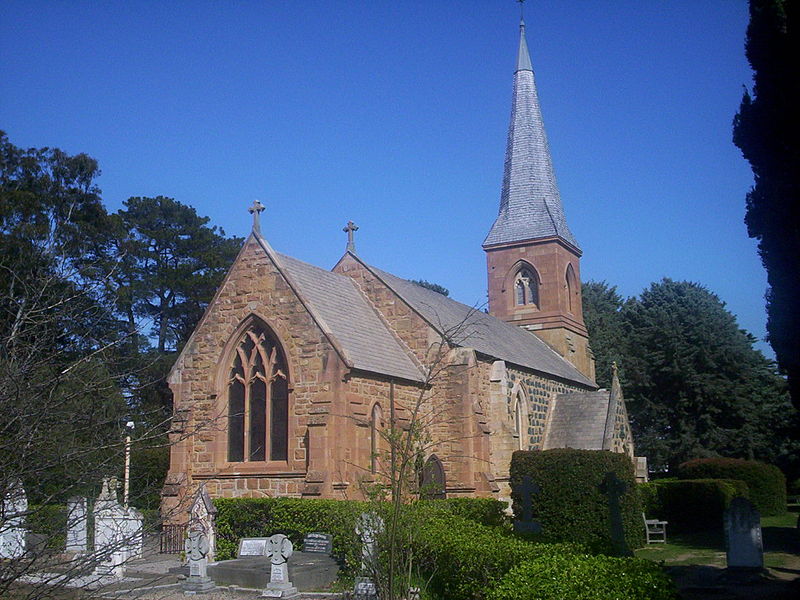 Anglican
church of St John's was established here by Robert Campbell of
Duntroon on 12 March 1845 as St John Canberry -- on the same
date in 1913 that Lady Denman officially named Canberra. The
original church walls were made of local bluestone, quarried in
nearby Campbell. The sandstone chancel was added in 1872; the
tower and spire, designed by Edmund Blacket, was added in 1878.
The slightly asymmetrical appearance of the spire was caused by
timber shortages during construction, leading to a shortfall
between the ribs when pulled together. The interior is small but
impressive, with early Australian stained glass windows and an
Australian cedar hammerbeam roof. The adjoining cemetery
contains the graves of early Canberra pioneers, including George
Blundell, the Guise family, and Robert Garran, Commonwealth
Solicitor-General 1916-32 (the Canberra suburb of Garran is
named for this important figure). The gravestones often include
the ceramic roses that seem so favoured in many Australian
cemeteries.
Anglican
church of St John's was established here by Robert Campbell of
Duntroon on 12 March 1845 as St John Canberry -- on the same
date in 1913 that Lady Denman officially named Canberra. The
original church walls were made of local bluestone, quarried in
nearby Campbell. The sandstone chancel was added in 1872; the
tower and spire, designed by Edmund Blacket, was added in 1878.
The slightly asymmetrical appearance of the spire was caused by
timber shortages during construction, leading to a shortfall
between the ribs when pulled together. The interior is small but
impressive, with early Australian stained glass windows and an
Australian cedar hammerbeam roof. The adjoining cemetery
contains the graves of early Canberra pioneers, including George
Blundell, the Guise family, and Robert Garran, Commonwealth
Solicitor-General 1916-32 (the Canberra suburb of Garran is
named for this important figure). The gravestones often include
the ceramic roses that seem so favoured in many Australian
cemeteries.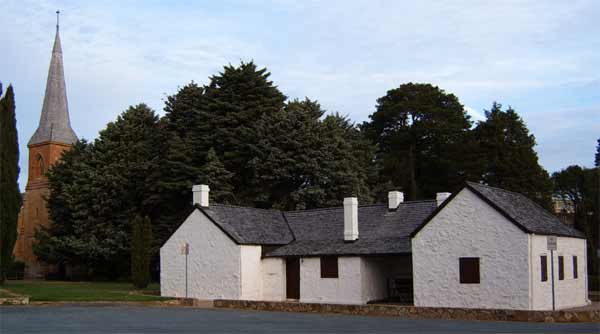
Next to the church is St. John's Schoolhouse Museum (t 02 6249 6839; open Wed 10.00-12.00, weekends and holidays 14.00-16.00), in the settlement's first school building, in use from the 1840s until the 1900s. Taken over by the National Capital Development Commission in 1969, the museum offers interesting artefacts and displays about the history of the school, the church, and Canberra in general.
Anzac Parade monuments
As with all heartfelt patriotic monuments, these memorial sculptures are rife with symbolic content, and aesthetically range from the impressive to the overstated. First in line on the west side is the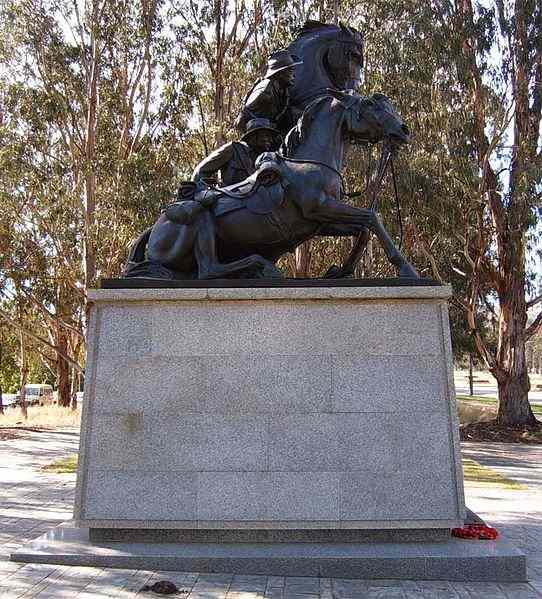 Desert
Mounted Corps Memorial, in honour of the Australian Light Horse
Brigade, as well as other Australian and New Zealand troops who
fought in the Middle East during the First World War. Arguably
the most aesthetically traditional and sophisticated monument on
the Parade, this equestrian sculpture was originally created by
Webb Gilbert (1867-1925), and completed by Paul Mountford and
Australia's leading sculptor Bertram Mackennal (1863-1931). The
original monument stood from 1932 at Port Said, Egypt, until it
was blown up during the Suez Crisis in 1956. This replica was
installed in 1968, while another one stands in Albany, Western
Australia, from which the troops had embarked.
Desert
Mounted Corps Memorial, in honour of the Australian Light Horse
Brigade, as well as other Australian and New Zealand troops who
fought in the Middle East during the First World War. Arguably
the most aesthetically traditional and sophisticated monument on
the Parade, this equestrian sculpture was originally created by
Webb Gilbert (1867-1925), and completed by Paul Mountford and
Australia's leading sculptor Bertram Mackennal (1863-1931). The
original monument stood from 1932 at Port Said, Egypt, until it
was blown up during the Suez Crisis in 1956. This replica was
installed in 1968, while another one stands in Albany, Western
Australia, from which the troops had embarked.Immediately across the Parade is the Rats of Tobruk Memorial, commemorating the famous Australian forces who held the German Afrika Corps in Tobruk, Libya in 1941. An obelisk monument at the Tobruk War Cemetery, designed by soldier R.L. Sands, was meant to serve as the basis for this design, although the present sculpture, designed by Marc Clark and unveiled in 1983, differs from the original in its inclusion of the bronze 'Eternal Flame' in the centre. An original marble inscription stone and steps from the Tobruk Post Office appear beneath the flame.
Next in line on the west side of the Parade is the Vietnam Veterans' Memorial, the most recently completed monument, dedicated in 1992. In keeping with the wishes of the Vietnam veterans themselves, sculptor Ken Unsworth sought to incorporate 'a feeling of time and place' and to refrain from 'abstract design'. The resulting work includes photographic images, a 'graffiti wall' with soldiers' own words, and a black halo containing the names of all those Australians who died in the conflict (520 of them).
The Royal Australian Air Force Memorial is immediately across the Parade. The second monument erected after the Desert Mounted Corps Memorial, it is the most abstract and therefore caused the most controversy. Designed by German-born Inge King (b. 1918), the sweeping stainless-steel forms symbolise flight. The inscription, per adua ad astra, 'through adversity to the stars', is the motto of the RAAF. It was dedicated in 1971.
The site for the proposed Korean War Memorial is next in line. Dedicated in 1996 with the support of the Korean Government, the interim design, five carefully placed boulders from the Kapyong region of Korea, is most affecting. A more ambitious monument is currently being planned.
The Australian Army's Memorial, further north on this side, was erected in 1989. The army gave explicit instructions that the monument was to be 'unmistakably representational' of the Australian soldier, without abstract symbolism, and this requirement is certainly manifest in the final product. Designed by Joan Walsh-Smith (b. 1946), it consists of two oversized sculptures of the characteristic 'Aussie digger' surrounded by seven pillars representing the seven army campaigns. Some symbolism crept in with a simulated rock platform representing the land base of the army's operations.
Across the street is the Royal Australian Navy Memorial, an odd conglomerate of the representational and the geometric, complete with water fountains. Designed by Croatian-born sculptor Ante Dabro (b. 1938) in 1986, the aesthetic integration of the figures and forms were almost overwhelmed by the hydraulic considerations that the flowing water required. In the end, water took on a more subordinate role than initially planned.
Two of the most
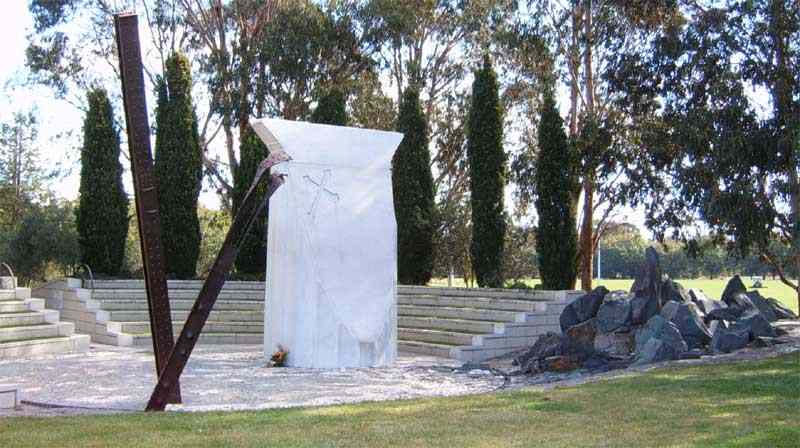 intriguing
monuments are at the top of the Parade. The first is the
Hellenic-Australian Memorial completed in 1988 in honour of the
Anzac troops who died in the 1941 Greek campaign. Designed by
Ken Woolley (b. 1933), the form of the monument is decidedly
post-modern, with its inclusion of Doric columns, a Greek
amphitheatre shape, a Greek Orthodox cross, and mosaic pavement.
The strength of the Greek-born community in Australia and the
subsequent close ties between Greece and Australia made this
monument possible.
intriguing
monuments are at the top of the Parade. The first is the
Hellenic-Australian Memorial completed in 1988 in honour of the
Anzac troops who died in the 1941 Greek campaign. Designed by
Ken Woolley (b. 1933), the form of the monument is decidedly
post-modern, with its inclusion of Doric columns, a Greek
amphitheatre shape, a Greek Orthodox cross, and mosaic pavement.
The strength of the Greek-born community in Australia and the
subsequent close ties between Greece and Australia made this
monument possible.The Kemal Ataturk Memorial is similarly the result of Turkish-Australian relations. Indeed, the proposal for this monument came from the Turkish government, which in 1985 renamed a portion of the Gallipoli coast Anzac Cove. Gallipoli, of course, is the most famous and historically resonant battle in which Australian troops were involved during the First World War. The modest design, created by Turkish artist Huseyin Gezer (b. 1920), incorporates the crescent symbol of the Turkish flag with a mask-like head of Kemal Ataturk, father of modern Turkey, above a moving quotation from the leader about the Australian soldiers who died on Turkish soil. Soil from Anzac Cove is enshrined beneath a plaque in the centre of the memorial.
Australian War Memorial
In the 1920s, proposal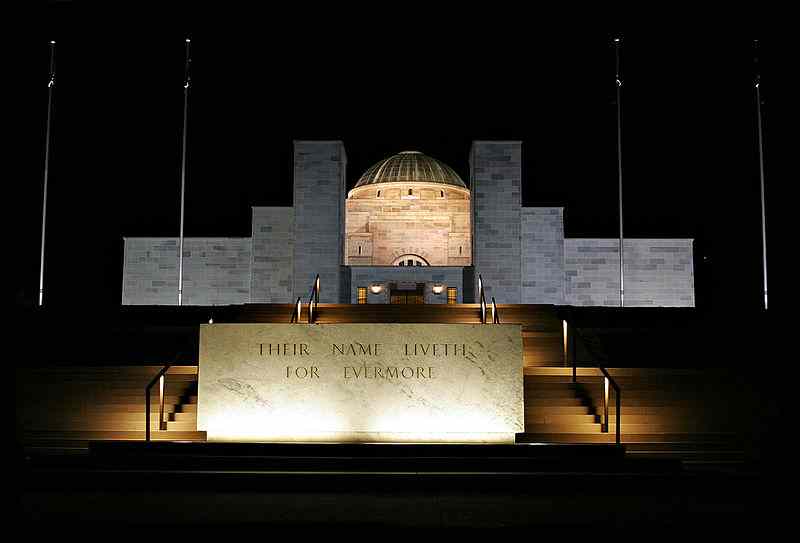 s for a
national Australian War
Memorial to be located in Canberra gained momentum. The
major impetus for the project came from C.E.W. Bean, official
historian of the Australian participation in the First World
War, and John Linton Treloar, an official who devoted his life
to the memorial (t (02) 6243 4211, daily 10.00-17.00).
s for a
national Australian War
Memorial to be located in Canberra gained momentum. The
major impetus for the project came from C.E.W. Bean, official
historian of the Australian participation in the First World
War, and John Linton Treloar, an official who devoted his life
to the memorial (t (02) 6243 4211, daily 10.00-17.00).The War Memorial is one of the most visited institutions in the country. The volunteer staff, most of them ex-servicemen, provide excellent free tours and will help with any research questions presented to them. During holidays, the facilities can be crowded, so try to go early. The Dawn Service on ANZAC Day is particularly moving.
In 1926, two Australian architects were chosen as a compromise after an international competition. Emil Sodersten (1901-61), best known for his Art Deco buildings, and John Crust (1884-1964), a more traditionally trained architect, presented joint designs for the structure, but aesthetic differences and political intrusions led to inevitable conflicts, and by 1938, Sodersten was forced to withdraw from the project. The building, an odd mixture of classical restraint and Art Deco touches yet appropriately solemn, was finally opened in 1941. The Hall of Memory was not completed, with its impressive stained glass windows and Byzantine-inspired mosaic decorations by Napier Waller, until 195 9. Major extensions were made to the original structure in the 1970s to accommodate the ever-expanding collection. The Tomb of the Unknown Soldier, at the heart of the Hall of Memory, was not dedicated until 1993, when a soldier buried at the Australian Imperial Force cemetery in France was returned here and interred on Remembrance Day.
As with any national patriotic monument, the main focus of the memorial is a commemoration of the 102,601 Australians who have died in military conflicts. Australians are proud that every one of their war dead is included in the Memorial's Roll of Honour on panels along the cloisters' walls. The courtyard walls also include 26 delightful gargoyles of Aborigines and native fauna.
The galleries include informative exhibitions detailing Australia's involvement in foreign wars, using artefacts, oral history recordings, and video displays; these galleries, arranged chronologically by conflict, are located on the ground floor. The lower ground floor consists of special exhibitions on aspects of war, as well as surprisingly rich displays from the Memorial's substantial collections of art. These include not only paintings and drawings created by Australia's official war artists, most of them leading painters and illustrators (Australia continued to employ such artists even in the Vietnam War), but also an odd assortment of Byzantine mosaics, European sculptures, and Middle Eastern artefacts. The main entrance of the Memorial is flanked by the Menin Gate lions, which originally stood at the entrance to the Belgian town of Ypres, site of Australia's most costly battle in the Great War (38,000 Australians were killed or wounded here in 1917). Ypres gave them to the Australian nation as a commemorative gift. The Memorial also houses an active research centre and library.
Most recently, the Treloar Technology Centre, housing wartime vehicles and artillery, has been opened in an enormous facility in the Canberra suburb of Mitchell; open one day a year, generally in late September, small admission fee.
Inner South ~ Yarralumla
Yarralumla is the site of Government House, the Governor-General's residence, and as such is the 'first' suburb of the capital. In the 1920s it was known as Westridge, and was one of the town's slums; the area where embassies are now located is where the toughest workers lived. This reputation has changed dramatically, especially since the lake was filled in, making Yarralumla one of the most desirable of residential neighbourhoods.
Sir Albert V. Jennings (1897-1993) was a builder who in 1951 and 1952 contracted 150 German carpenters to come to Canberra to build government-designed houses. The group were dubbed 'Jennings' Germans'; they built some 1800 houses in O'Connor, Ainslie, Turner and Yarralumla (then Westridge). The old 'guvvies' still remaining are their legacy.
Embassy District, Yarralumla
As the seat of the Federal government and national capital, Canberra is home to most foreign embassies, although many countries also have consulates in Sydney and Melbourne, where often more business occurs. The majority of these embassies are in Yarralumla, just off Commonwealth Avenue and near Lake Burley Griffin, although several smaller ones are in rather large but ordinary-looking suburban residences in places such as O'Malley and Red Hill.
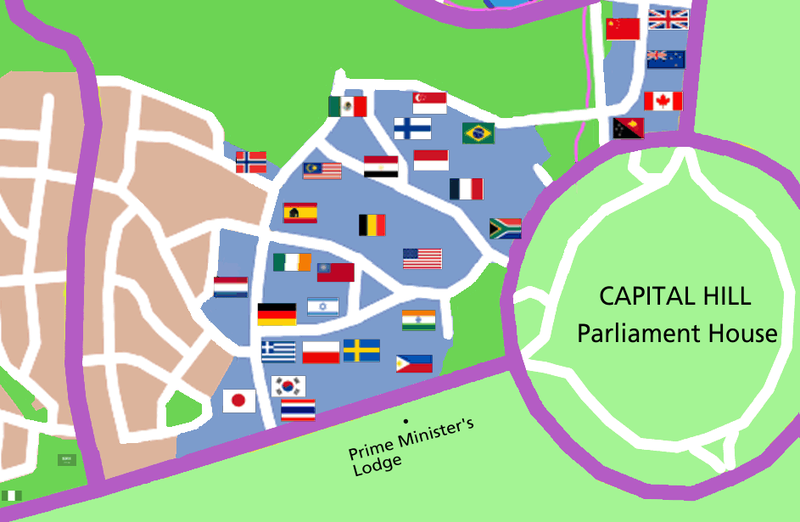 While the
Yarralumla embassy area is popular with tourist bus tours, many
of the embassy buildings are undistinguished representatives of
Canberra's adherence to the diluted modernism of the 1950s and
1960s: cinder block, glass and steel in various formulations.
See, for example, the dreary British, Canadian and New Zealand
High Commissions in a row on Commonwealth Avenue itself, just
below the new Parliament building. The British High Commission
was built in 1953 by the British Ministry of Public Building and
reflects all of the austere attitudes of the time; a recent
renovation has enhanced the entrance, but has changed little
else externally. Several embassies have more recently been
constructed in suitably 'ethnic' styles meant to represent the
country's native architectural character. In a few cases, such
as the Indian and the Japanese embassies, these architectural
attempts are moderately successful in evoking regional flavour,
but in many other cases, the results border on kitsch.
While the
Yarralumla embassy area is popular with tourist bus tours, many
of the embassy buildings are undistinguished representatives of
Canberra's adherence to the diluted modernism of the 1950s and
1960s: cinder block, glass and steel in various formulations.
See, for example, the dreary British, Canadian and New Zealand
High Commissions in a row on Commonwealth Avenue itself, just
below the new Parliament building. The British High Commission
was built in 1953 by the British Ministry of Public Building and
reflects all of the austere attitudes of the time; a recent
renovation has enhanced the entrance, but has changed little
else externally. Several embassies have more recently been
constructed in suitably 'ethnic' styles meant to represent the
country's native architectural character. In a few cases, such
as the Indian and the Japanese embassies, these architectural
attempts are moderately successful in evoking regional flavour,
but in many other cases, the results border on kitsch.Turn west off Commonwealth Avenue on to Coronation Drive; on the left is the British High Commission, on the right the Hyatt Hotel (entering the map above on the upper right). On the left behind the British High Commission on Forster Street stands the enormous embassy of the Republic of China. This much-touted complex, completed in 1990, looks as though it was taken directly from the back lot of a movie company, and could just as easily have been constructed for Disneyland, fulfilling Jean Baudrillard's famous statement that Disneyland has become the reality. When it was opened to the public during one of the annual Embassy Open Days, the queues extended for blocks, and every day bus loads of tourists arrive early in the morning to have their pictures taken in front of the edifice, ignoring the fact that traffic does continue to pass on the road. One rarely ever sees anyone enter or leave the place, which only exacerbates the sense that it is a stage set.
Proceed left up Forster Street past the New Zealand and Canadian High Commissions. On the left is the High Commission of Papua New Guinea. A replica of an authentic haus tamburan, or ceremonial house, the embassy is one of the most interesting and inviting -- you can actually visit the house any time during the day, to view examples of indigenous art.
Continue on Forster Street past the Embassy of Brazil and the High Commission of Singapore; at Darwin Avenue, turn left and proceed to the Indonesian Embassy, which includes a sculpture pavilion housing statues of Hindu deities, as well as gamelan instruments and handicrafts from every Indonesian province. The pavilion is open to the public on most working days. Continue up Darwin Avenue past the French Embassy.
On the right are the imposing walls surrounding the American Embassy. This embassy, which was the first one constructed in Yarralumla, in 1941-43, imitates the Georgian architecture of Williamsburg, with substantial quantities of brick and even a gilded bust of George Washington above the main door and an eagle weathervane. As with all US embassies these days, the place is an armed fortress, nearly impossible to gain access; even those who need to conduct business must do so through a slit in a bullet-proof window at a side entrance.
If you walk around to Perth Avenue and on to Rhodes Place, you will find the Embassy of South Africa. According to Graeme Barrow, author of Embassies of Canberra (1978), 'Canberra is fortunate to possess such an example of graceful architecture as the South African Embassy because normally South Africa does not build overseas.' Apparently South African diplomats are happy in Canberra, because it is very much like the 'easy-going' atmosphere of their own capital, Pretoria. The building, designed by Malcolm Moir, is a great example of Cape-Dutch-style residential architecture.
Return to Perth Avenue. Opposite the American Embassy and down the hill is the High Commission of India, rather successfully imitating Northern India's Mogul architecture.
From here continue on Turrana Avenue past the heavily guarded Israeli Embassy on the right, and the heavily forested and secluded Swedish Embassy on the left. Next in line is the diplomatic mission of Poland, and on the corner that of Greece. The building of the Greek Embassy is one of the better examples of pre-post-modern eclecticism, with its art-historical references to Classical architecture. As it was built at a time when architectural dogma required a building within modernist purist constraints, these classical elements are only eclectic touches; the structure itself is essentially modernist, just as the German Embassy across the street is.
Turn left on to Empire Circuit, and walk past the Japanese Embassy on the right, and further on, the Embassy of Thailand, both of them in regional style. The Thai Embassy regularly stages cultural days, in which local Thai restaurants participate to present the cuisine of their country.
Return to Empire Circuit and walk back (west) past the German Embassy on the right and the Dutch Embassy on the left. At Arkana Street, turn right. On the west side is the Embassy of Spain, one of the nicest and most effective examples of contemporary Spanish architectural design, although the architect was an Australian, Robert Warren. It opened in 1980.
Opposite the Spanish Embassy is that of Ireland, designed by Sydney architect Philip Cox as if it were a country cottage with a contemporary function. Next on the corner is the Embassy of the Republic of Myanamar (formerly Burma), its lovely violet shades in contrast to the starkness of neighbouring Israel.
Walk back to Empire Circuit; turn right. On the left is the Canberra Mosque, which serves the city's Muslim community; appropriately, the Malaysian High Commission is opposite on the right on the corner of Empire Circuit and Perth Avenue. Its design, completed in 1983, is reminiscent of typical Malaysian architecture, and is decorated with 14 hibiscus flowers representing the states of the Malay Peninsula.
Across the street is the Embassy of Mexico. Designed by Terrazas de la Pena in 1982, it is reminiscent of Luis Barragan's work, with diagonal slashes of walls, and a replica of an enormous stone Aztec calendar embedded in the wall at the entrance.
Yarralumla Nursery and Sri Chinmoy Peace Walk
From Empire Circuit, head south back to Schlich Street, turn right and travel to Novar Street. From the Yarralumla shops on Novar Street, proceed north to Lake Burley Griffin; turn left on Brown Street and right on Banks Street to enter Weston Park, which occupies a pleasant peninsula on the lake. This is a popular picnic spot, with children's playground, maze and miniature train ride, usually quite crowded on summer holidays. The city bus routes stop at the corner of Novar and Schlich Streets, requiring a bit of a walk to the park.Weston Park Road also turns into Yarralumla Nursery, the original government-run facility founded in 1915 by Thomas Weston. From here, most of Canberra's eight million trees were grown and provided to new homeowners. Weston also planted experimental stands of trees on this peninsula, many of which can still be seen along the bike trail and walking path that leads to the Sri Chinmoy Peace Walk and Government House.
The entrance to this lovely trail is on Banks Street immediately before entering Weston Park; the walk to the entrance of Government House is c 1.5km with pleasant views to the lake at Yarramundi Reach, where the Olympic Rowing Course is established for rowers in training. The trail also passes the side of the Royal Canberra Golf Course.
Royal Canberra Golf Club
Founded in 1926 along the Molonglo River, the club moved to its present site upon the filling of Lake Burley Griffin in the 1960s. As might befit the capital, John Harris designed the course with no hidden hazards, but with a call for accuracy down the tree-lined fairways and concentration putting on the large greens. The kangaroos which lounge everywhere on the course shy from people without clubs but take no notice of golfers. The government has attempted methods of sterilisation to control the population, which continues to multiply nonetheless.
Government House
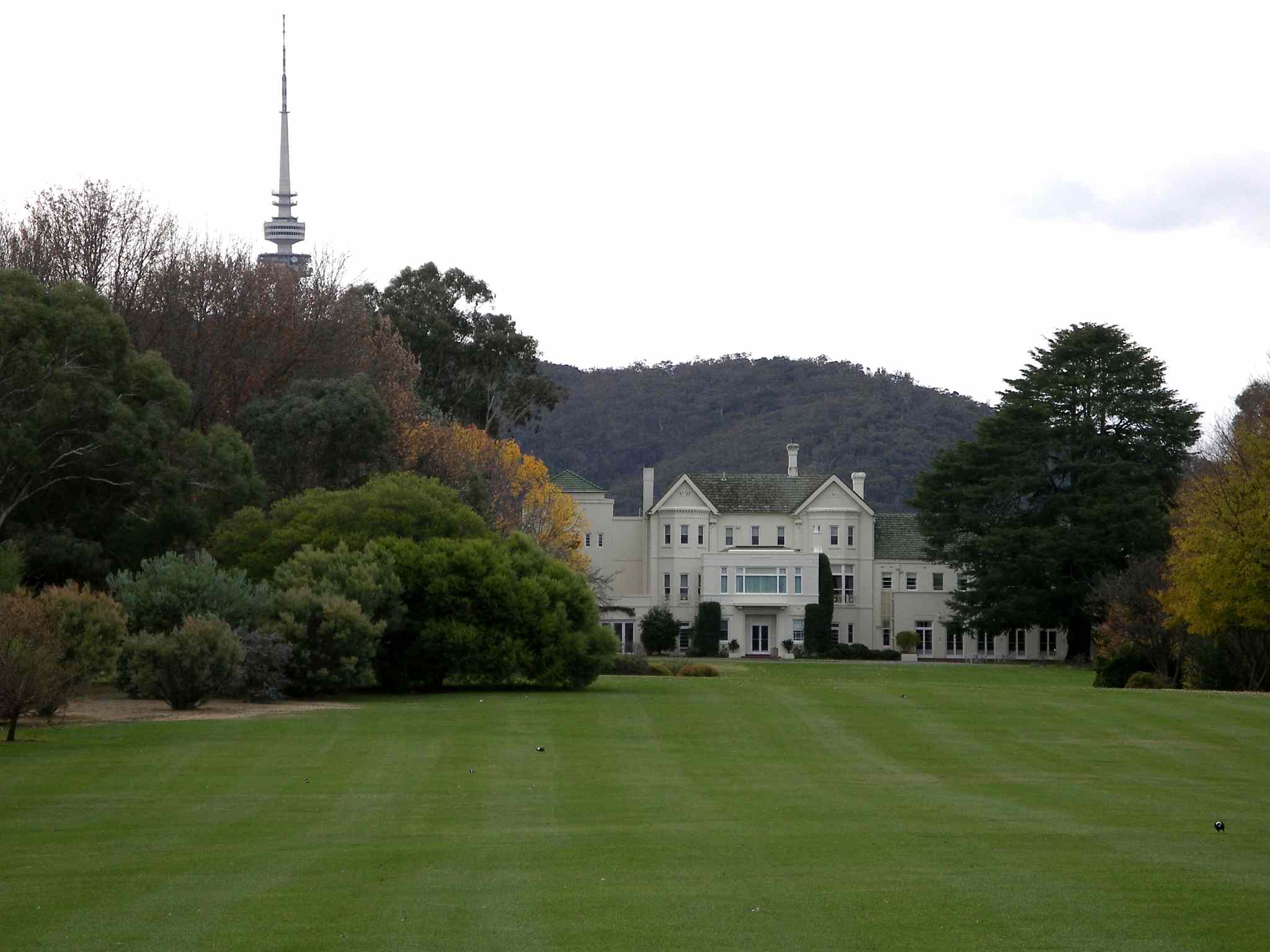 This
house has been the residence since 1927 of the Australian
Governor-General, the Queen's representative and nominal head of
state. The first Governor-General to live here was Sir Isaac
Isaacs (1855-1948), first native-born Australian to hold this
post; he moved in 1931. The house itself was built in 1891 by
Frederick Campbell, grandson of Robert Campbell of Duntroon. By
the time the house was purchased by the government, the property
consisted of 40,000 acres (16,200 ha), mainly used for sheep
grazing; the nearby Yarralumla Woolshed, still used for
bush-dances and community events, attests to the property's
heritage. The name Yarralumla apparently derives from the
Aboriginal word 'Arralumna', which is believed to relate to the
surrounding hills. Government House is only open on special open
days during the year. The best view of the house itself is from
a special viewing point off Lady Denman Drive, from the Cotter
Road exit off Adelaide Avenue.
This
house has been the residence since 1927 of the Australian
Governor-General, the Queen's representative and nominal head of
state. The first Governor-General to live here was Sir Isaac
Isaacs (1855-1948), first native-born Australian to hold this
post; he moved in 1931. The house itself was built in 1891 by
Frederick Campbell, grandson of Robert Campbell of Duntroon. By
the time the house was purchased by the government, the property
consisted of 40,000 acres (16,200 ha), mainly used for sheep
grazing; the nearby Yarralumla Woolshed, still used for
bush-dances and community events, attests to the property's
heritage. The name Yarralumla apparently derives from the
Aboriginal word 'Arralumna', which is believed to relate to the
surrounding hills. Government House is only open on special open
days during the year. The best view of the house itself is from
a special viewing point off Lady Denman Drive, from the Cotter
Road exit off Adelaide Avenue. Royal Australian Mint
From Adelaide Avenue, take the Kent Street exit and continue across to Denison Avenue to find the Australian Royal Mint. Action buses from Civic also travel here. The Mint manufactures all of Australia's coinage as well as some for foreign countries, from preparation of raw material to final distribution; currency is still produced in Melbourne. Visitors are able to take a tour that exhibits all stages of production. A small shop emphasises, naturally, coins, where proof sets can be purchased. t 1 300 652 020, weekdays 09.00-16.00, weekends and holidays 10.00-16.00.
Mount Stromlo Observatory
From Adelaide Avenue, take the Cotter Road turn-off and turn at the sign for Mount Stromlo Observatory, c 8km from Canberra's Civic Centre. Only the 1868 15 centimetre Farnham telescope, the student and faculty offices, and the computer lab survived the historic Canberra fire in January 2003. Currently, all of the ANU's working astronomical instruments are at Sliding Spring. The Mount continues to be a pleasant area to walk in; and the noteworthy cafe, Scope, has been re-built since the fire (10.00 - 17.00 weekdays, 8.00 - 17.00 weekends).Touring amateur astronomers will find active societies in the major cities. Frequently, they offer introductory evenings for the general public, as they do at Mt Stromlo.
Astronomy in Australia
As a visitor from the Northern Hemisphere with the least bit of awareness of the shapes and placement of the constellations, Australia's night sky is awesome. The cognative dissonance of the view of the moon is itself worth a trip to the antipodes. Richard Dibbon-Smith gives an easy introduction to orienting yourself.
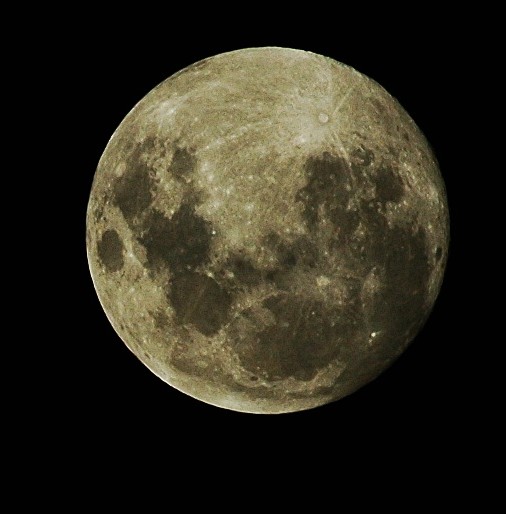
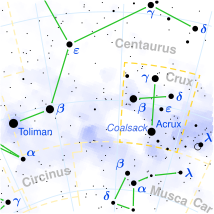
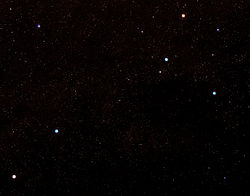
The earliest interest in astronomy in Australia involved determining geographic positions for navigators. Marine Lt. Dawes erected the first observatory in 1788 at Dawes Point as part of his work for the British Board of Longitude. By 1791 it was equipped with a transit sent by the Astronomer Royal. Explorer Matthew Flinders calculated the Point's latitude and longitude in the late 1790s. In keeping with his excellent cartographic skills, his calculations were a mere two seconds in error.
Governor Thomas Brisbane erected the first telescopic observatory at Parramatta in 1822 at his own cost. The equipment included a transit instrument (Troughton, 3.75 inch aperture and 64 inch focal length), a 16 inch repeating circle (Reichenbach), and a 46 inch achromatic telescope (Banks). Several of these instruments are still in the Sydney Observatory's collection. Assisted by German astronomer Carl Rümker (1788-1862) and particularly James Dunlop, Governor Brisbane compiled sufficient observations to result in William Richardson's Parramatta Catalogue of 7385 stars for the equinox in 1825.
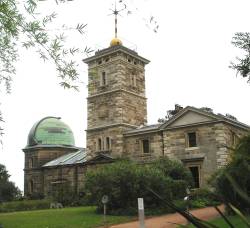
Having established longitude and latitude and catalogued the significant celestial bodies, astronomy in the colony languished in New South Wales until the appointment of W.E. Cooke in 1912 as Government Astronomer and Professor of Astronomy.
In Victoria, initial efforts to provide accurate time to ships' captains commenced in the 1850s. The observatory at Williamstown was moved to the Domain in 1863. By that time the principle interest was completion of a geodetic survey begun in 1858. By 1866 the observatory was working on its portion of the sky (60º to 80º south declination) for a southern version of the Durchmusterung (a survey catalogue of stars). The observatory began a 20-year-long systematic revision of South African John Herschel's work on the southern nebulae using a Cassegrain reflector (Grubb, primary aperture 48 inches and focal length 360 inches, secondary aperture 8 inches and focal length 74.7 inches). Solar observations formed a part of the observatory's work in the 1870s, but the routine work continued to be meridian observations of star positions. The Victorian government discontinued its support for the observatory in 1943. Its time work was transferred eventually to Mount Stromlo.
While the preoccupation with latitude, longitude, meridian and time continued among governmental observers, independent astronomers tended to find planetary observations more engaging. Charles Todd mapped Jupiter and its satellites; Francis Abbott specialised in comets in the 1860s; W.J. MacDonnell, G.D. Hirst (well known for his planetary drawings) and Walter Frederick Gale all concentrated on planets, particularly Mars and Jupiter. In 1910 James Oddie, an amateur astronomer from Ballarat, donated a Grubb equatorial refracting telescope (9-inch aperture, 135-inch focal length) to the Commonwealth as the basis for an observatory in the new capital territory. Mount Stromlo, at 782m height, was selected as the site for the building to house the telescope. This effort was furthered by Dr W.G. Duffield with the support of the British Association for the Advancement of Science and the Australian Solar Physics Committee in 1914.
The First World War interrupted work at the complex. The observatory's first reflecting telescope was a 76cm instrument, again donated by an amateur astronomer, J.H. Reynolds of Britain. Work in the 1930s continued to give prominence to solar observations, while atmospheric observations were given increasing prominence.
After the Second World War the solar observations were taken over by CSIRO and Canberra's city lights began affecting observations in the visible spectrum. The current work concentrates on the Magellanic clouds, the process of star formation and the structure and evolution of galaxies.
The Great Melbourne Telescope, built in 1868, was sold as scrap to the observatory in 1945 and re-erected. By the 1990s, 100 years of wear to its bearings and gears finally necessitated it be rebuilt as an infra-red telescope.
Lady Denman Drive
From Civic, take Parkes Way west, exit on to Lady Denman Drive at Clunies Ross Street for a pleasant drive along Lake Burley Griffin past Black Mountain Peninsula, a popular picnic spot. Travel another 1.5km along the lake to Yarramundi Reach next to Scrivener Dam. Alternatively, take the Cotter Road exit off Adelaide Avenue and follow Lady Denman Drive across Scrivener Dam to reach the centre. Currently, the Yarramundi Visitor's Centre and the National Aquarium occupy the site.
National Zoo and Aquarium
The aquarium and wildlife exhibition park, with interesting aquatic displays and exhibitions of koalas, fur seal, penguins, and a Tasmanian Devil. The complex will soon expand with more touristy accoutrements, including a ski slope and hotel. The grounds are a nice place for a picnic (t 02 6287 8400; open daily, 10.00-17.00, $35 adults, concession $29).
National Arboretum
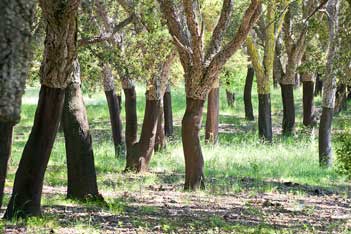
A bit further along Parkes Way, the National Arboretum has recently opened (t 61 13 2281; grounds open daily 6.00-10.30 daylight savings, 7.30-17.30 otherwise; Centre, gift shop, National Bonsai and Penjing Collection daily 9.00-16.00; admission is free but parking is $2 per hour, $7 maximum). Of particular interest here are the cork forest, planted between 1917 and 1920, and the Himalayan cedars. The Village Centre, designed by Tonkin Zulaikha Greer Architects, offers nice views of the pine plantation, the lake, and surrounding area.
Forrest, Deakin, Red Hill, Manuka
Immediately south of the Parliament House on Capital Hill are the 1930s 'garden city' suburbs of Forrest, Deakin, and Red Hill. These contain some of the oldest, as well as the most prestigious, homes in the capital. Australian-born media baron Rupert Murdoch has a residence in Red Hill, along with former Prime Minister Keating.The Lodge
Off Adelaide Avenue on National Circuit, just below New Parliament House, is the prime minister's official residence, the Lodge. The first Prime Minister to occupy the building was Stanley Melbourne Bruce, who lived there in 1927. Over the years, some prime ministers have chosen to live in nearby hotels instead, but Robert Menzies, long-serving conservative Prime Minister and champion of Canberra development, resided there throughout his 17-year reign in the 1950s. Various controversies concerning subsequent redecoration of the Lodge's interiors have reached the political arena, most notably that done by Harold Holt's flamboyant wife Zara and Prime Minister Paul Keating's notorious penchant for teak tables and antique clocks. Prime Minister John Howard refused to set up permanent residence in Canberra, although the Lodge is still at his disposal. The Lodge is open to viewers only occasionally, usually during a heritage week in early April.
To the east of the Lodge, the suburb of Forrest includes many diplomatic residences, as well as the Jewish Memorial Centre and the Italian-Australian Club and, on Canberra Avenue, one of the many Australian monuments to the Scottish poet Robert Burns. Take Melbourne Avenue south, past Canberra Church of England Girls' Grammar School, and turn left on to Mugga Way, arguably the most prestigious address in the capital. The huge properties here sit at the base of Red Hill, a nature reserve. The road up to Red Hill Lookout offers spectacular views of the city, and is a popular spot from which to enjoy the city's frequent fireworks displays.
Calthorpes'
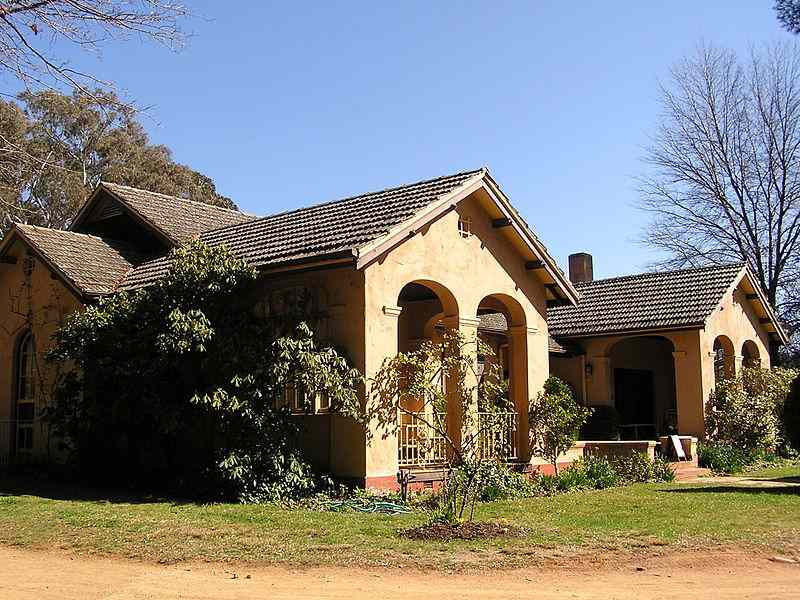 At 24 Mugga
Way is Calthorpes',
a preserved example of the 1920s middle-class residences built
for Canberra's first public servants. The architectural firm of
Oakley and Parkes designed the house in 1927 in a Spanish
Mission style prevalent in other structures throughout this
suburb; at the time, much of the area was given the unfortunate
name of Blandfordia, mercifully changed later on. The original
owners were the J.H. Calthorpe family; Mr Calthorpe was one of
Canberra's first real estate agents. The family lived in the
house until 1979, leaving the furnishings and fittings virtually
intact as they had been since the 1930s. The ACT government
acquired the house and has opened it to the public as a
fascinating exhibition of early Canberra domestic life. The
gardens are particularly attractive, and the back yard even
includes the remains of an air-raid shelter and children's
'cubby' house. Open weekends 13.00-16.00; t 02 6207 3968.
At 24 Mugga
Way is Calthorpes',
a preserved example of the 1920s middle-class residences built
for Canberra's first public servants. The architectural firm of
Oakley and Parkes designed the house in 1927 in a Spanish
Mission style prevalent in other structures throughout this
suburb; at the time, much of the area was given the unfortunate
name of Blandfordia, mercifully changed later on. The original
owners were the J.H. Calthorpe family; Mr Calthorpe was one of
Canberra's first real estate agents. The family lived in the
house until 1979, leaving the furnishings and fittings virtually
intact as they had been since the 1930s. The ACT government
acquired the house and has opened it to the public as a
fascinating exhibition of early Canberra domestic life. The
gardens are particularly attractive, and the back yard even
includes the remains of an air-raid shelter and children's
'cubby' house. Open weekends 13.00-16.00; t 02 6207 3968.Manuka
From Civic, several bus routes travel to Manuka, one of the earliest shopping centres in the city; it is a short ride down Canberra Avenue from the New Parliament House. Today, Manuka is still the most popular place for cafes, restaurants, some nightlife, and boutique shopping. Remnants of its original design, shop-fronts with stained-glass windows and tiled façades, can still be seen in the courtyard.
Across Canberra Avenue from the shopping centre on Manuka Oval, behind the Retired Servicemen's Club, is the Manuka Swimming Pool, built in the 1930s in a delightful Art Deco style (t 02 6295 1349; weekdays 6.30-19.00, weekends 8.00-19.00, $5.50)
Northbourne Avenue to Barton Highway and Hall
Northbourne Avenue is the main thoroughfare into central Canberra from Sydney. It is lined with office buildings, housing projects, and hotels, and is thoroughly uninteresting. However, it does lead to some interesting suburban attractions. From Northbourne heading north, turn right into Ipima Street, which becomes Cowper Street at Limestone Avenue; at Cowper and Bonney Streets is All Saints Anglican Church in the suburb of Ainslie (a city bus also travels here).The church is notable because the structure was originally built in the 1860s by Colonial
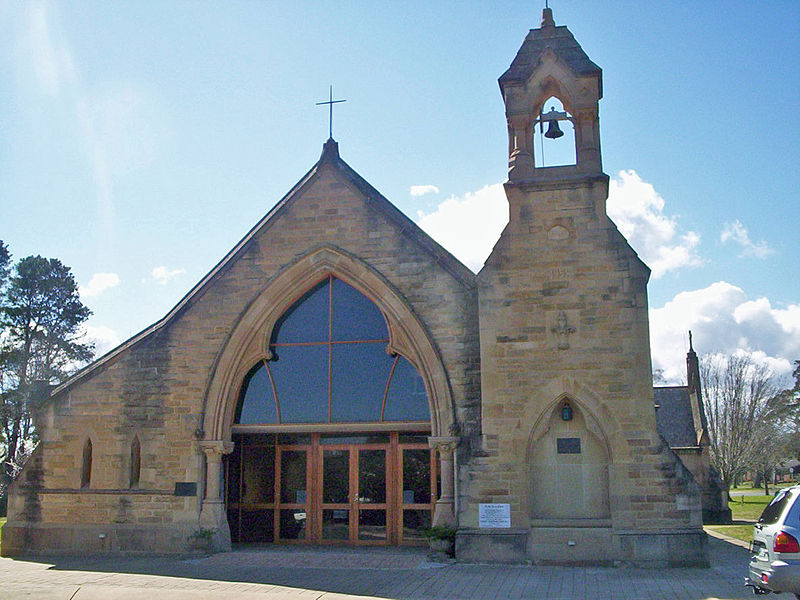 Architect
James Barnet as the cemetery station at Sydney's famous Rookwood
Cemetery, where trains would bring the funeral processions and
coffin. By the 1950s, the church station had fallen into
disrepair; in 1957, All Saints' minister Ted Buckle, purchased
the lot for £100. Each stone was numbered and transported in 83
semi-trailer trucks, then faithfully reassembled on this site.
The interior, with 52 arches, 365 different carvings and
beautiful woodwork, testifies to the wisdom of the
reconstruction; oddly, the church can also be considered as one
of Canberra's oldest structures.
Architect
James Barnet as the cemetery station at Sydney's famous Rookwood
Cemetery, where trains would bring the funeral processions and
coffin. By the 1950s, the church station had fallen into
disrepair; in 1957, All Saints' minister Ted Buckle, purchased
the lot for £100. Each stone was numbered and transported in 83
semi-trailer trucks, then faithfully reassembled on this site.
The interior, with 52 arches, 365 different carvings and
beautiful woodwork, testifies to the wisdom of the
reconstruction; oddly, the church can also be considered as one
of Canberra's oldest structures.Back on Northbourne Avenue, continue north 1.5km to Antill Street; turn right to Dickson Street, and Canberra's mini-Chinatown on Woolley Street. It is really only a block of excellent restaurants, mostly Asian, and a few old-fashioned Asian grocery stores; plans are afoot to make it more flashy and self-consciously geared to tourists, but at the moment, it is still pleasantly authentic.
Barton Highway
Another 1.5km north along Northbourne Avenue is the turn-off to the Barton Highway towards Yass. Immediately nort
 h
of this intersection is the Canberra Racecourse, with regular
horse races, and the National Exhibition Park, site not only of
the Royal Canberra Show in February, but also home to Summernats, the
biggest 'revheads' event held every year, usually in the first
week in January. At that time, Northbourne Avenue swarms with
customised cars and their adoring fans.
h
of this intersection is the Canberra Racecourse, with regular
horse races, and the National Exhibition Park, site not only of
the Royal Canberra Show in February, but also home to Summernats, the
biggest 'revheads' event held every year, usually in the first
week in January. At that time, Northbourne Avenue swarms with
customised cars and their adoring fans. The Barton Highway leads to the Federation Square Shopping Complex (c 3km), with assorted tourist attractions. The attractions are on the site of the old Ginninderra homestead, and a few 1880s buildings remain. The site also includes Cockington Green (open daily 9.30-17.00, last entry 16.15, admission adults $18.50, seniors $13.50 and children $10.50) a scale-model village of the English countryside, and an English pub. Across Gold Creek Road is the National Dinosaur Museum, containing Australia's largest collection of dinosaur artefacts (some replicas) and fossils (open daily including Christmas 10.00-17.00, admission $10.50 and $8.50, t 02 6230 2655).
Another 2km along the Highway leads to Hall, the ACT's only other 'town' aside from Canberra. It is a pleasant little village, with antique shops and a market on the first Sunday of the month on the showgrounds. The annual Australian sheep-dog trials take place here in March, presenting a wonderful experience of traditional rural culture and outstanding working-dog skills.
Lanyon
The Tuggeranong Parkway, off Parkes Way from Civic, leads around Lake Burley Griffin and through the suburb-filled Tuggeranong Valley to Lanyon Homestead, just before Tharwa on the edge of Namadgi National Park. Lanyon is c 35km south of the centre of Canberra, beautifully located near the Murrumbidgee River (open Tues-Sun, 10.00-16.00; t 02 6235 5677; note that admission can be combined with that to Calthorpe's and Mugga Mugga Cottage). Established in 1834 by pastoralist James Wright and John Lanyon and worked by convict and free labour, Lanyon remains as the only fully-preserved homestead station in the region. The original land holdings by Wright extended to 3540 acres (1432 ha) and were soon a self-sufficient community, ruled by Wright with an iron hand (he is said to have used the lash liberally on his workers, and w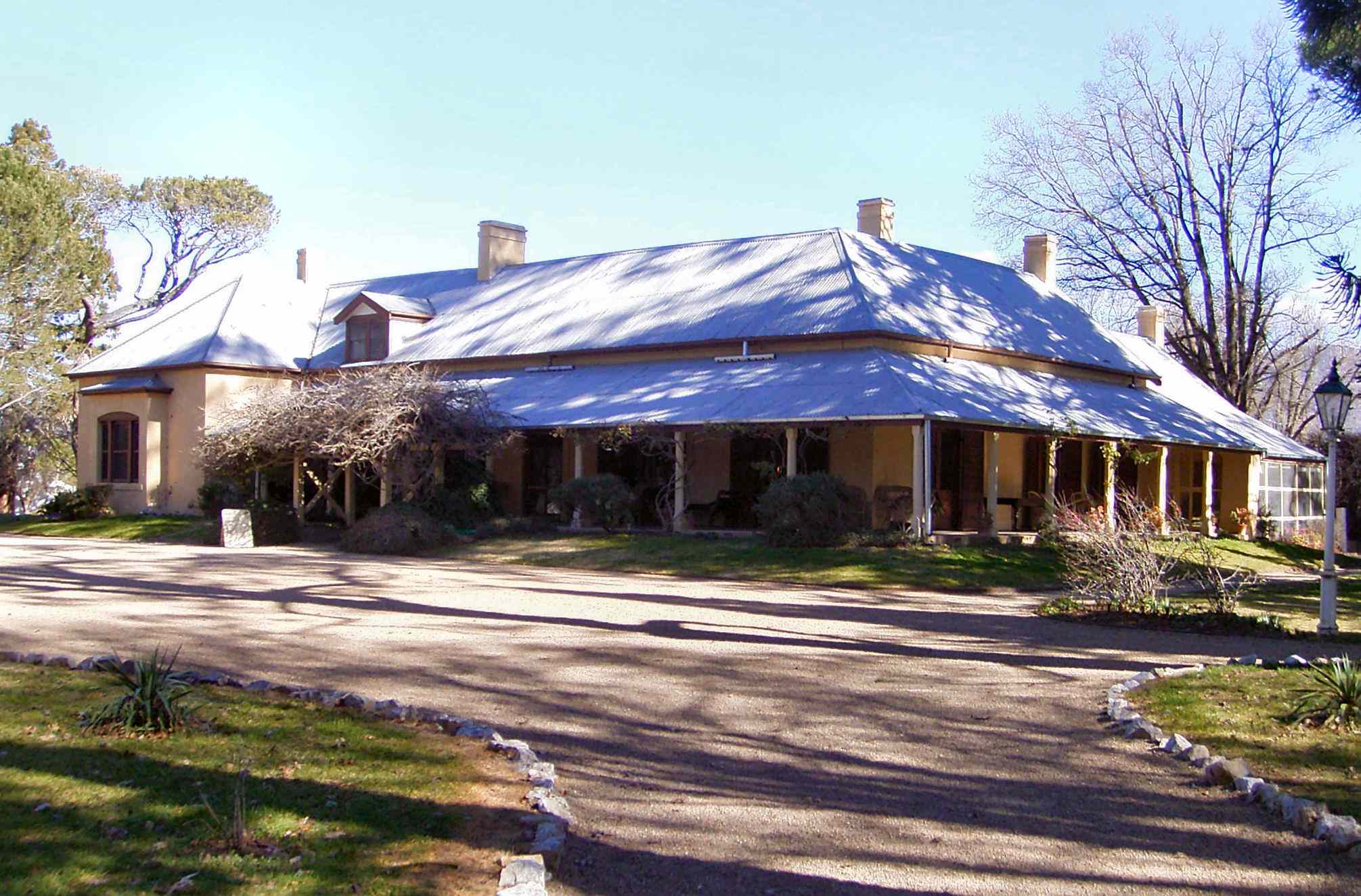 as certainly
instrumental in the systematic decimation of local Aborigines).
Financial difficulties led Wright to sell the property to Andrew
Cunningham in 1848; the Cunningham family occupied Lanyon until
1926, extending their holdings to some 10,000 acres (4500 ha)
and 60,000 sheep. Under the Cunninghams, the station became one
of the most prosperous in the region. The Field family owned
Lanyon from the 1930s until 1971, when the Commonwealth
Government took over the land; in 1980, it was opened to the
public as an historic house and museum. The grounds of Lanyon
offer a most pleasant and informative excursion from the city.
You can tour the homestead itself, built by the Cunninghams in
1859, with its marvellous verandah; great effort has been
made to preserve the interior furnishings as they appeared in
the Victorian era, and tours of the building allow detailed
inspection. The outbuildings are especially interesting, with
well-presented information panels, and even taped oral histories
by former Lanyon workers. The old barracks and store now operate
as a cafe. Most stunning are the gardens and surrounding
grounds, including some of the original plantings. Musical
evenings and food festivals are frequent events at Lanyon,
especially in the summer.
as certainly
instrumental in the systematic decimation of local Aborigines).
Financial difficulties led Wright to sell the property to Andrew
Cunningham in 1848; the Cunningham family occupied Lanyon until
1926, extending their holdings to some 10,000 acres (4500 ha)
and 60,000 sheep. Under the Cunninghams, the station became one
of the most prosperous in the region. The Field family owned
Lanyon from the 1930s until 1971, when the Commonwealth
Government took over the land; in 1980, it was opened to the
public as an historic house and museum. The grounds of Lanyon
offer a most pleasant and informative excursion from the city.
You can tour the homestead itself, built by the Cunninghams in
1859, with its marvellous verandah; great effort has been
made to preserve the interior furnishings as they appeared in
the Victorian era, and tours of the building allow detailed
inspection. The outbuildings are especially interesting, with
well-presented information panels, and even taped oral histories
by former Lanyon workers. The old barracks and store now operate
as a cafe. Most stunning are the gardens and surrounding
grounds, including some of the original plantings. Musical
evenings and food festivals are frequent events at Lanyon,
especially in the summer. Also in the grounds is the Nolan Gallery, built originally to house a collection of paintings donated by Sidney Nolan to the Commonwealth Government in 1974 (free, open weekdays 10.00-17.00, weekends 12.00-16.00). The gallery, which normally displays these important Nolan paintings, opened in 1980.
Namadgi National Park
From Lanyon, return to Tharwa Road and continue south, crossing the Murrumbidgee River on the Tharwa Bridge,
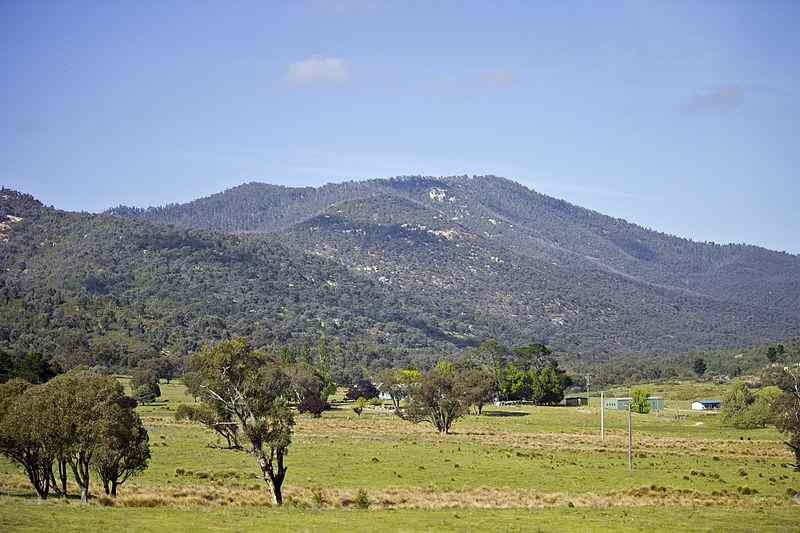 opened with great
fanfare in 1895 and now the oldest bridge in the region and one
of the only remaining Allan Truss bridges in the country. Turn
left after the river following the signs for about 8.5km to the
Namadgi
National Park Visitor's Centre (t 02 6207 2900). 'Namadgi'
was the name given to the park's mountain ranges by the original
Aboriginal inhabitants. The region, which at 105,900 ha
comprises 50 per cent of the ACT's land, was declared a national
park in 1984. The area is one of rugged beauty with stupendous
Alpine valley views as well as remote wilderness, walking trails
to suit all levels of bushwalkers, and comfortable campgrounds
set in the bushland. At Honeysuckle Creek, an area often covered
in snow in winter, are the remains of an early satellite
tracking station. Several Aboriginal sites, with rock paintings
at Yankee Hat, are also accessible to visitors in the park.
opened with great
fanfare in 1895 and now the oldest bridge in the region and one
of the only remaining Allan Truss bridges in the country. Turn
left after the river following the signs for about 8.5km to the
Namadgi
National Park Visitor's Centre (t 02 6207 2900). 'Namadgi'
was the name given to the park's mountain ranges by the original
Aboriginal inhabitants. The region, which at 105,900 ha
comprises 50 per cent of the ACT's land, was declared a national
park in 1984. The area is one of rugged beauty with stupendous
Alpine valley views as well as remote wilderness, walking trails
to suit all levels of bushwalkers, and comfortable campgrounds
set in the bushland. At Honeysuckle Creek, an area often covered
in snow in winter, are the remains of an early satellite
tracking station. Several Aboriginal sites, with rock paintings
at Yankee Hat, are also accessible to visitors in the park. The Visitor's Centre provides excellent free maps and information about conditions on the walking trails and wilderness hiking routes; be sure to notice the flocks of swallows that regularly nest around the centre building. The south-west portion of the park joins the Kosciuszko National Park. While the Boboyan Road through the park does travel all the way to Adaminaby in the Snowy Mountains some 80km away, the road conditions from the region around Brandy Flat are extremely rough and should really only be undertaken with a four-wheel drive vehicle.
Tidbinbilla Nature Reserve
From Tharwa, you can take the Tidbinbilla Road west c 5km, or from the city, take the Cotter Road c 35km to Tidbinbilla Nature Reserve. Traditionally one of the most popular excursions for locals and visitors, recent implementation of admission fees ($8 day pass) may see fewer regular visitors dropping by casually. The name 'Tidbinbilla' derives, at least in local tradition, from the Aboriginal 'Jedbinbilla', meaning 'place of initiation' ($10 entry fee; open summer gates 7.30-10.00, centre 9.00-17.00 later on weekends; winter gates 7.30-18.00, center 9.00-16.30; t 02 6205 1233).While only 5510 ha in the reserve, the place has wonderful wildlife attractions, including enclosures for the viewing of kangaroos, koalas, and native birds, all of them in the wild; visitors must sometimes do a bit of searching to find the animals, especially when trying to spot the koalas in the trees. Intrepid and patient animal watchers may even be able to see a platypus in the creeks near the enclosures, and those in the know can also find bowerbird nests, with their collections of blue objects, hidden among the bushes. Picnic areas in the reserve are also great spots to view kangaroos and emus, who actually make pests of themselves and will steal any food left on the tables. Tidbinbilla's walking trails are also adventurous and varied, including a very short one to Hanging Rock, an impressive granite outcrop that seems to balance precipitously on one end and certainly served as an Aboriginal shelter. These trails are where naturalist David Attenborough found the lyrebird that could mimic camera shutters and chainsaws (seen in his programme, The Life of Birds).
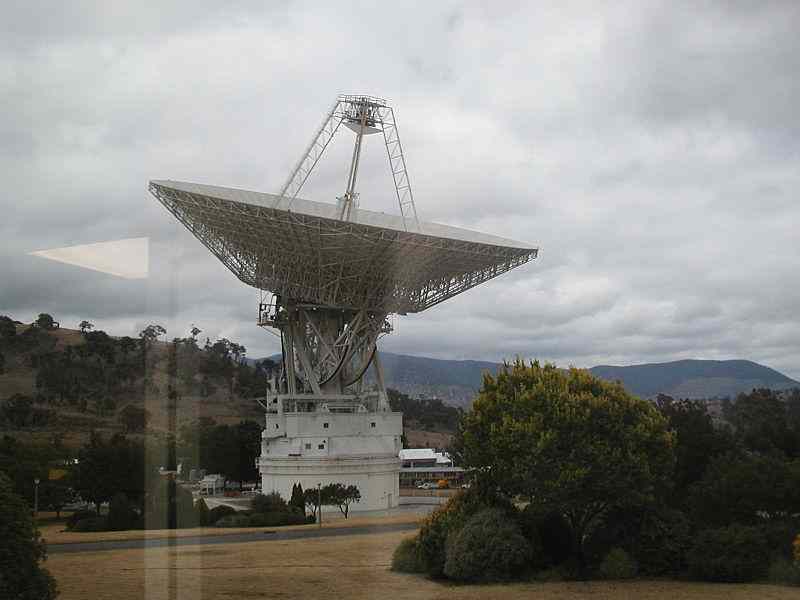 Canberra Deep Space
Communication Complex
Canberra Deep Space
Communication ComplexFrom Tidbinbilla Nature Reserve, travel 4km north on Cotter Road to reach the entrance to the Canberra Deep Space Communication Complex (t 02 6201 7880, open daily 09.00-17.00) space centre, established in 1965 as the Tidbinbilla Space Tracking Station to support the US National Aeronautics and Space Administration's deep space programme. The centre acts as the primary headquarters in the Southern Hemisphere for the tracking of satellites and space launchings, including the Apollo missions and lunar landings. The recent photographs produced by the Mars exploratory vehicle were first broadcast from this station through its link-up to NASA headquarters, and the public were allowed to view them here as they were beamed directly from the planet. The focal point of the centre's activities are its enormous dish antennas, the largest 70m in diameter; the visitor can watch them move automatically at regular intervals. The centre has fascinating displays of spacecraft and information about their tracking programmes, as well as a space-related gift shop and cafe.
Map of ACT -- Google Maps
450px-University_House_ANU_Canberra_(2948649223)%5B1%5D.jpg -- Dave Snowden
800px-Jardins_botaniques_nationaux_australiens.jpg -- Aenneken
file://E:/399px-Telstra_Tower_2009.jpg -- Bidgee
NatMusAus_Main_Entrance_Strip.jpg -- Myk Dowling
800px-Hotel_Canberra.jpg -- National Library of Australia
800px-Old_Parliament_House_Canberra_Dusk.jpg -- JJ Harrison (jjharrison89@facebook.com)
Capital_Hill_and_Old_Parliament_House_from_above -- Percita Dittmar
Australian National Gallery -- John Conway
St. John's Church -- Cfitzart
St. John's Schoolhouse Museum -- Peter Ellis
Desert Mounted Corps Memorial -- User:Peter Ellis
Australian War Memorial -- Fir0002/Flagstaffotos
Government House -- SmokeyJoe
Calthorpes -- Matilda
Awaiting IP permssion Constellations in the Southern Hemisphere -- http://www.dibonsmith.com/downunder.htm
Moon in Australia -- Jes from Melbourne, Australia
Crux_constellation_map.png: Torsten Bronger
Southern Cross -- Edoddridge
Sydney Observatory -- Sydney Morning Herald
All Saint's Church -- Ian Dunster
Lanyon -- Gimboid13
Tharwa Bridge -- Nick-D
Namadgi -- Bidgee
Main antenna (70 metres) of the Canberra Deep Space Communications Complex --Wilson Afonso
